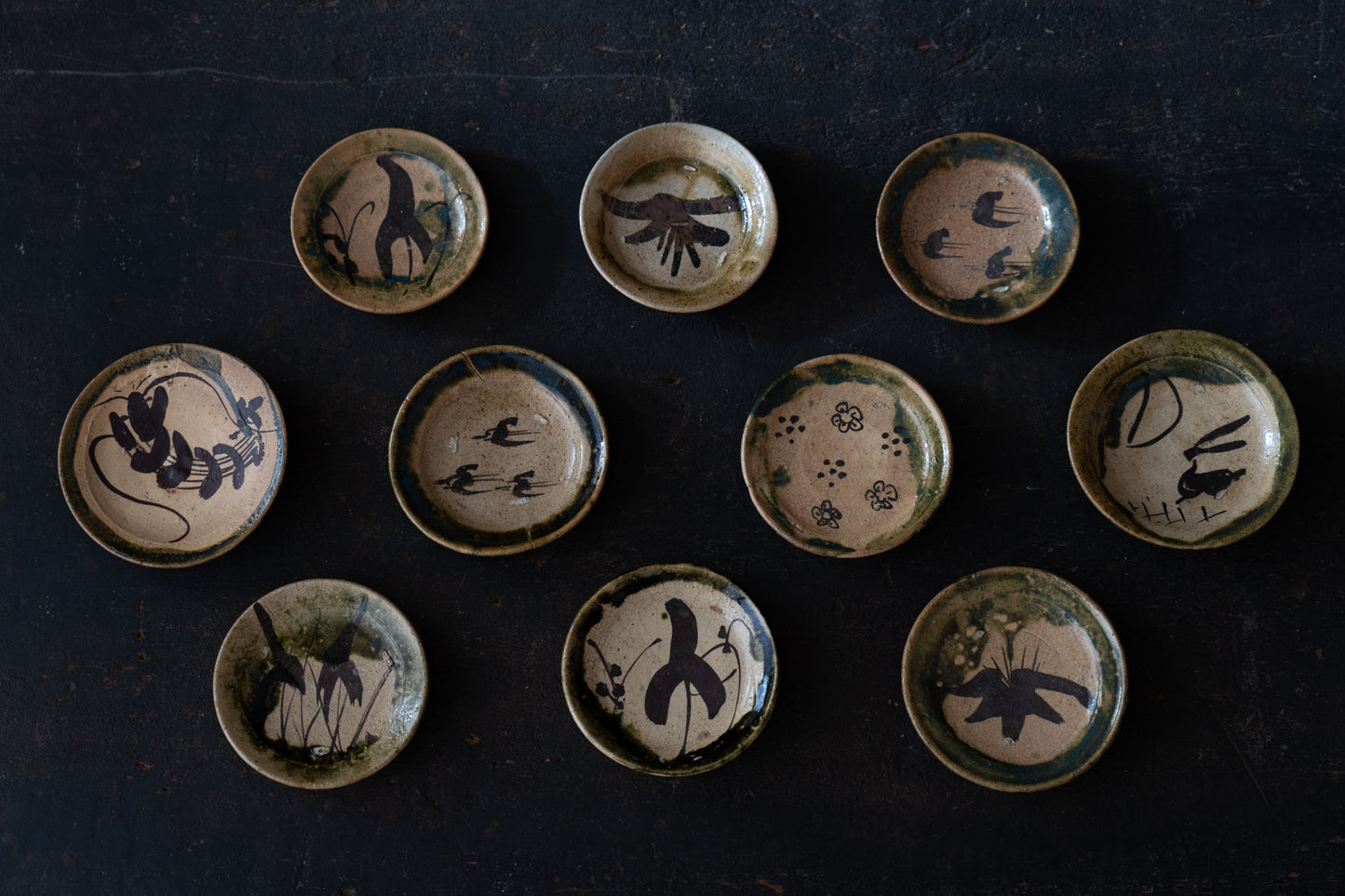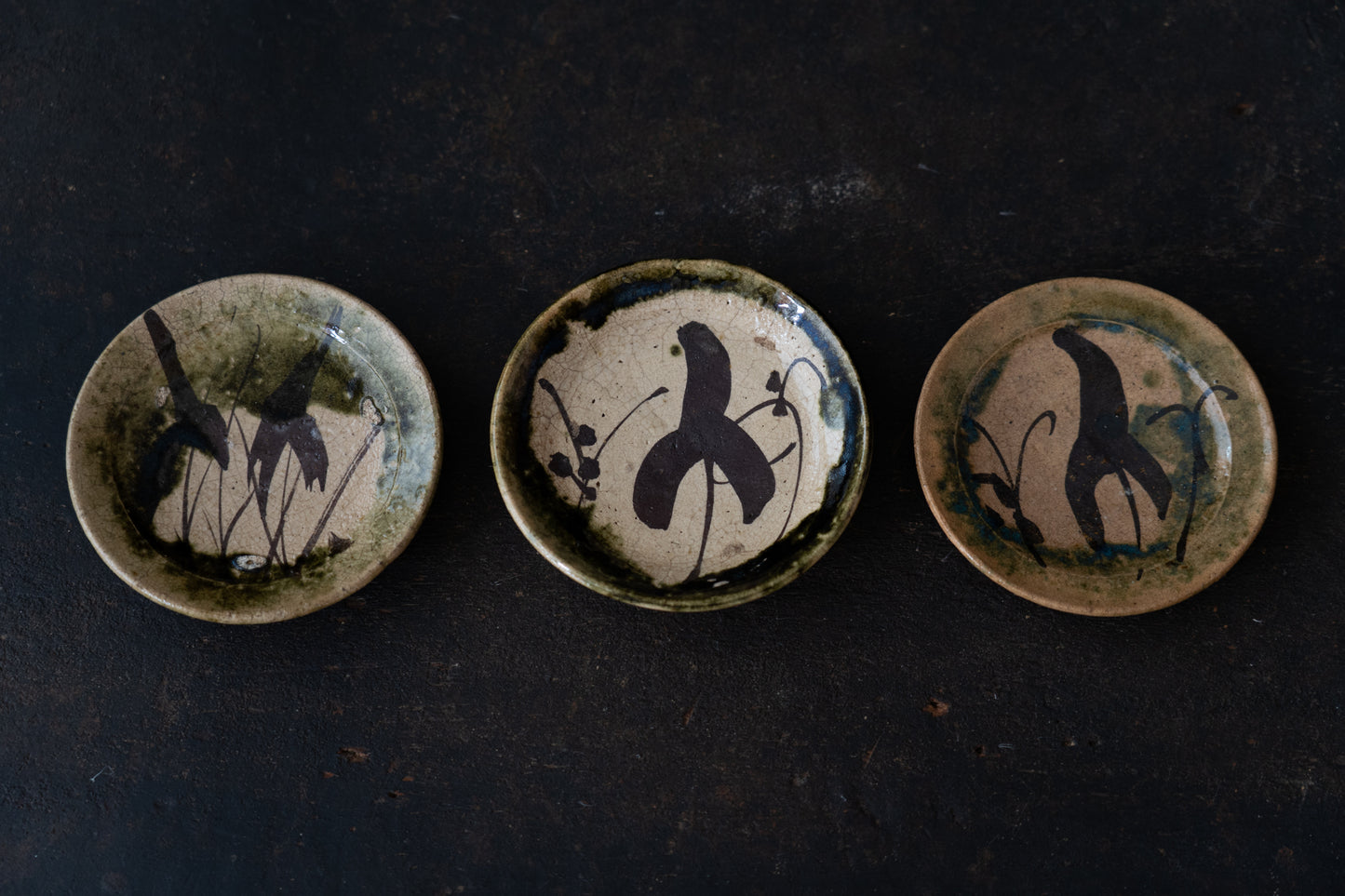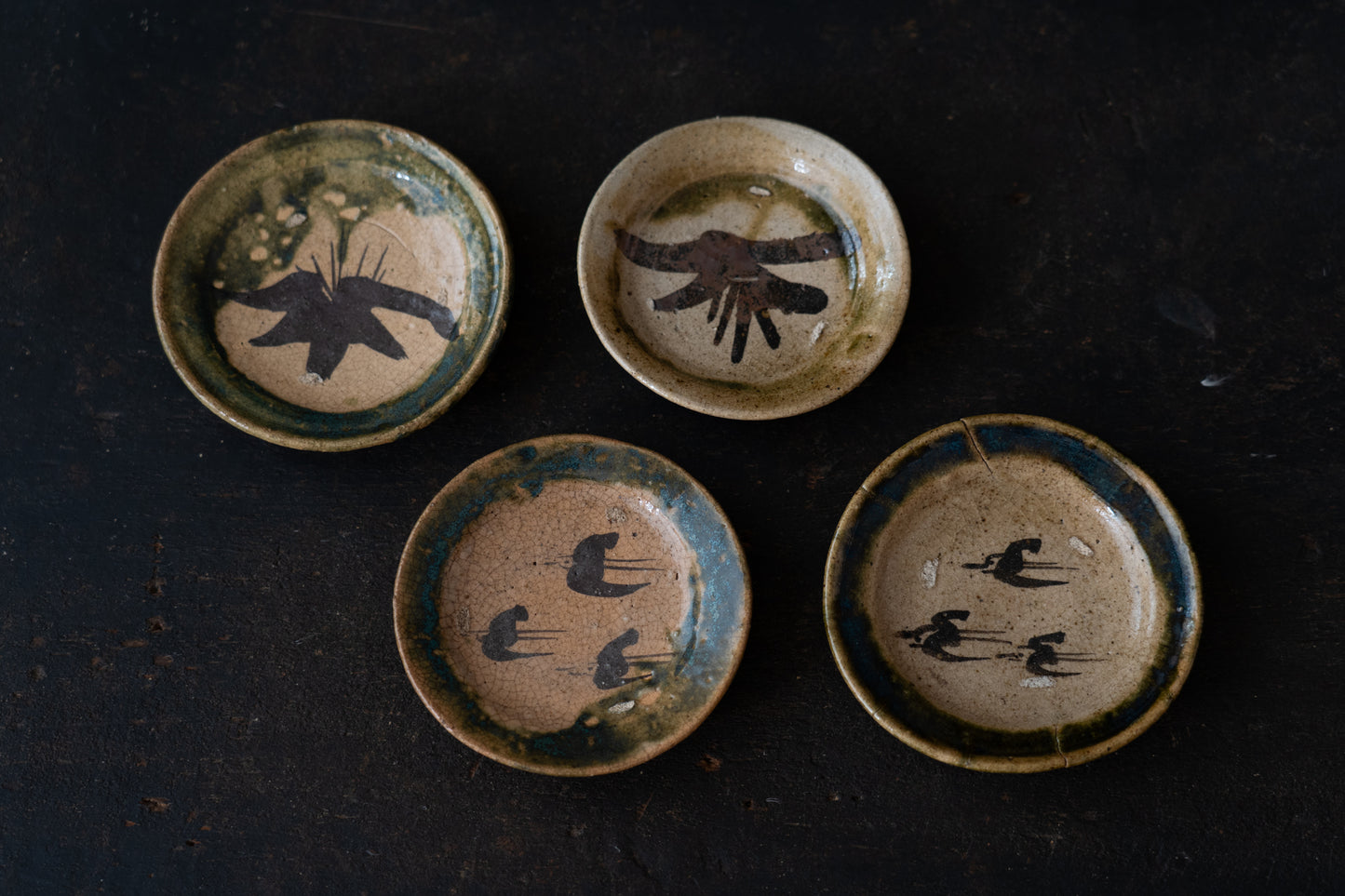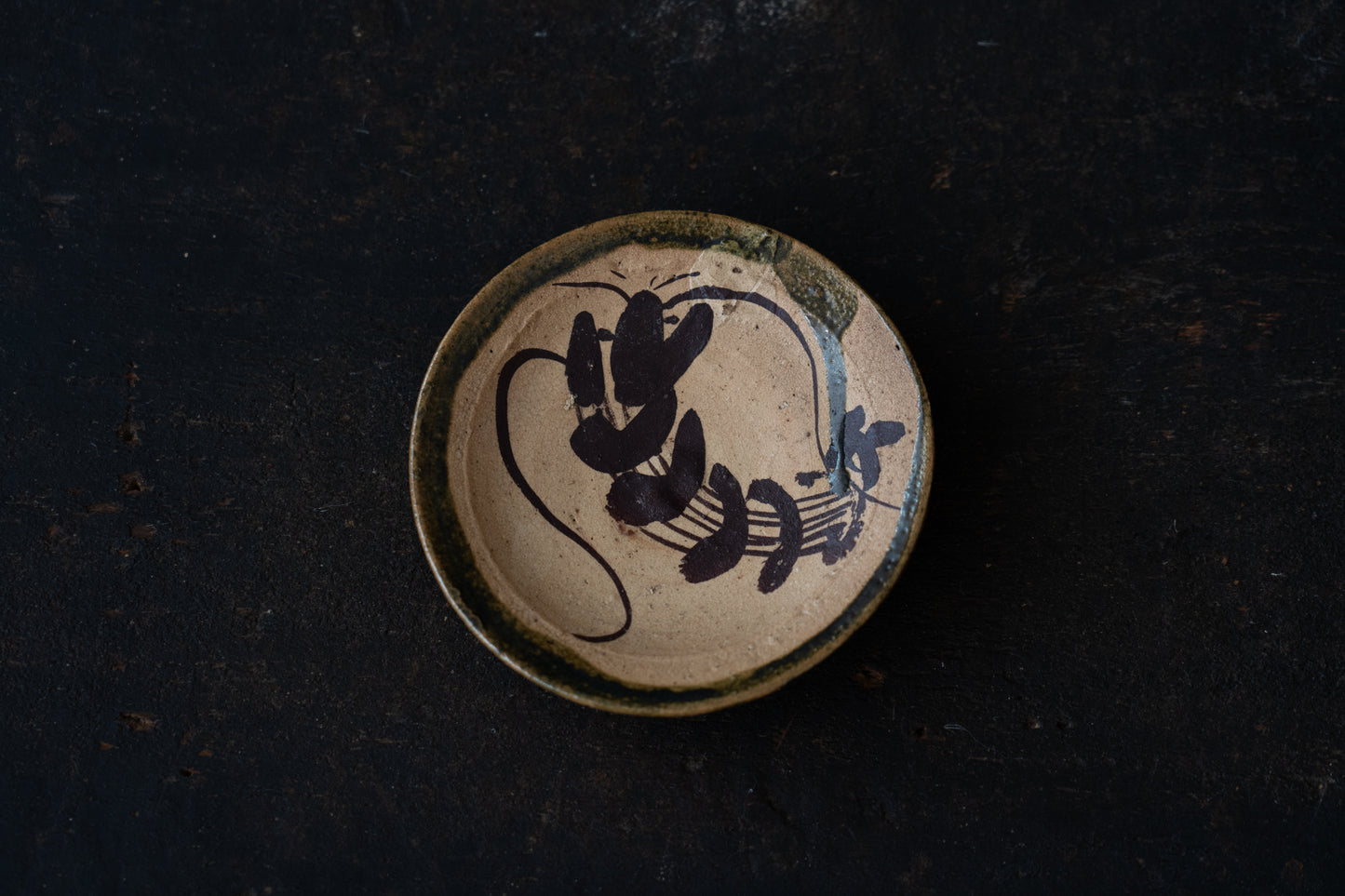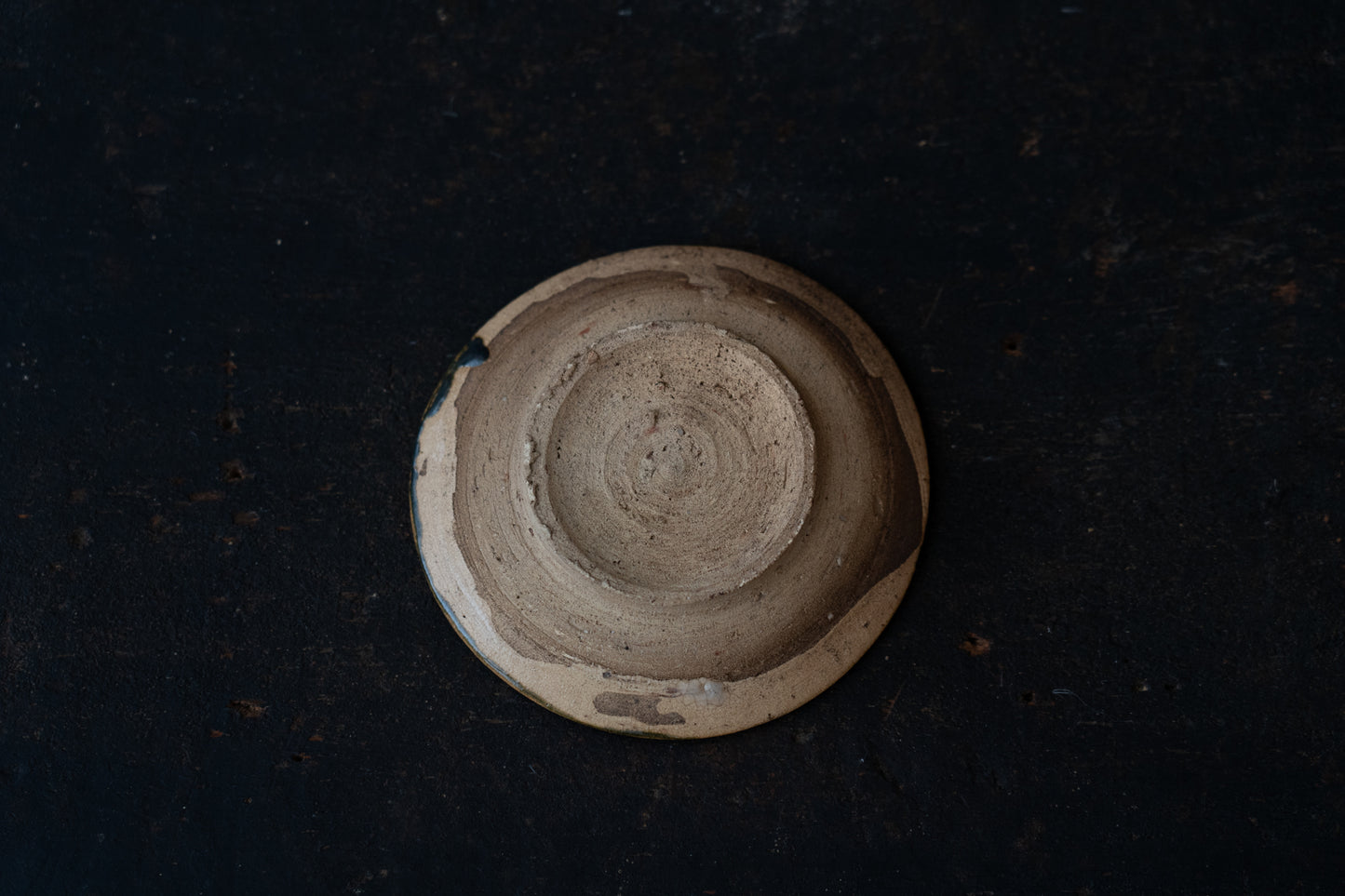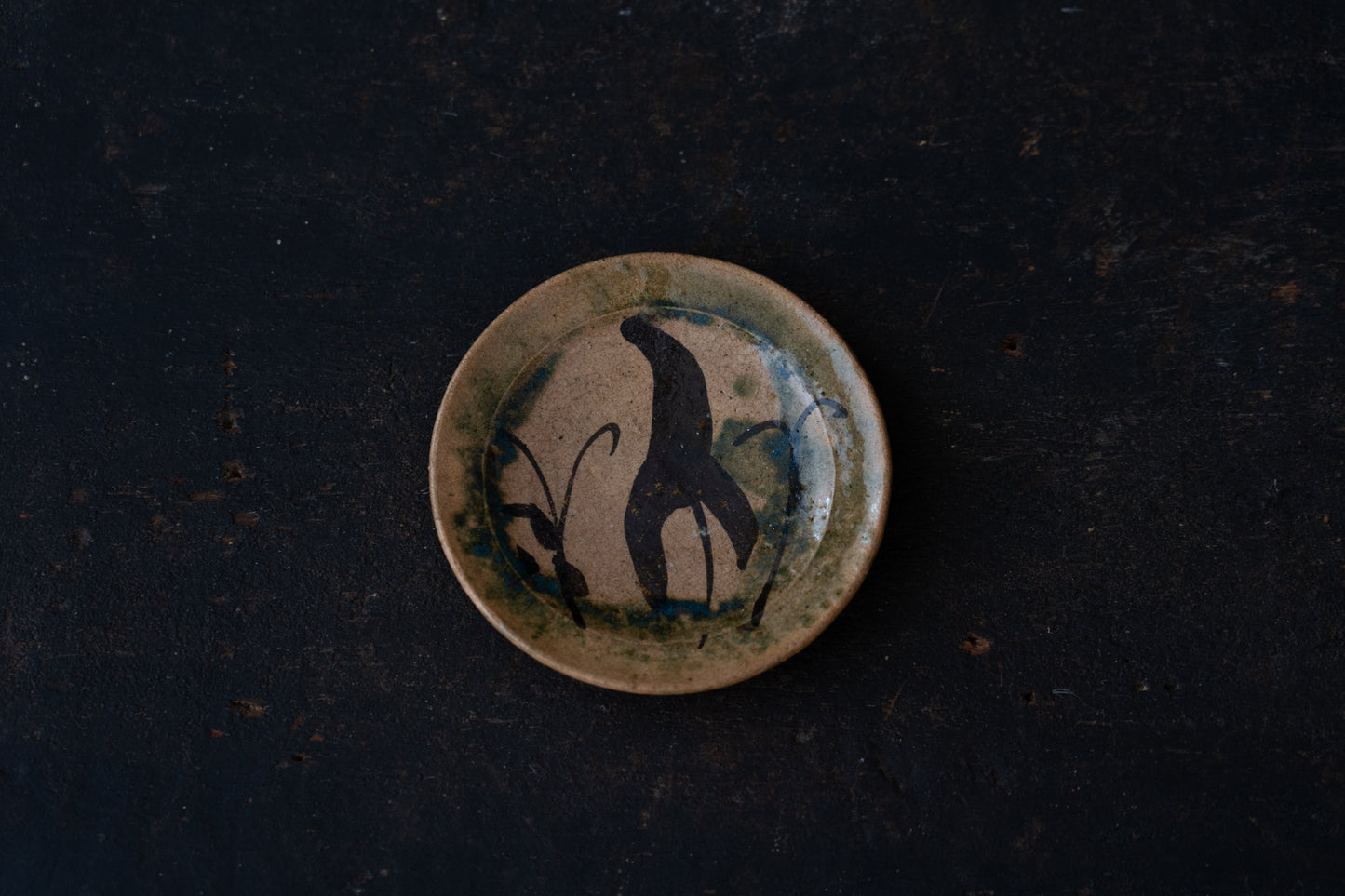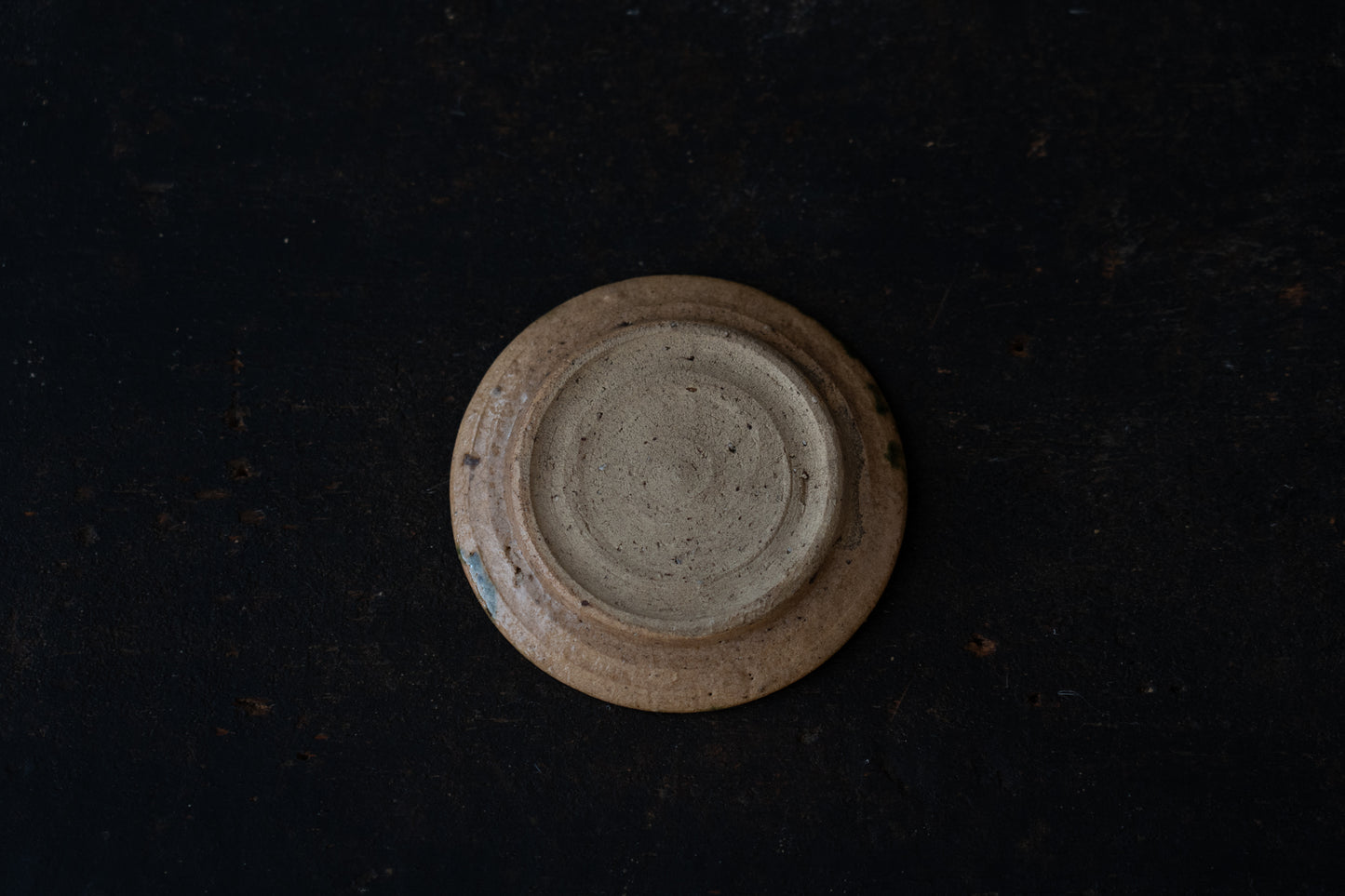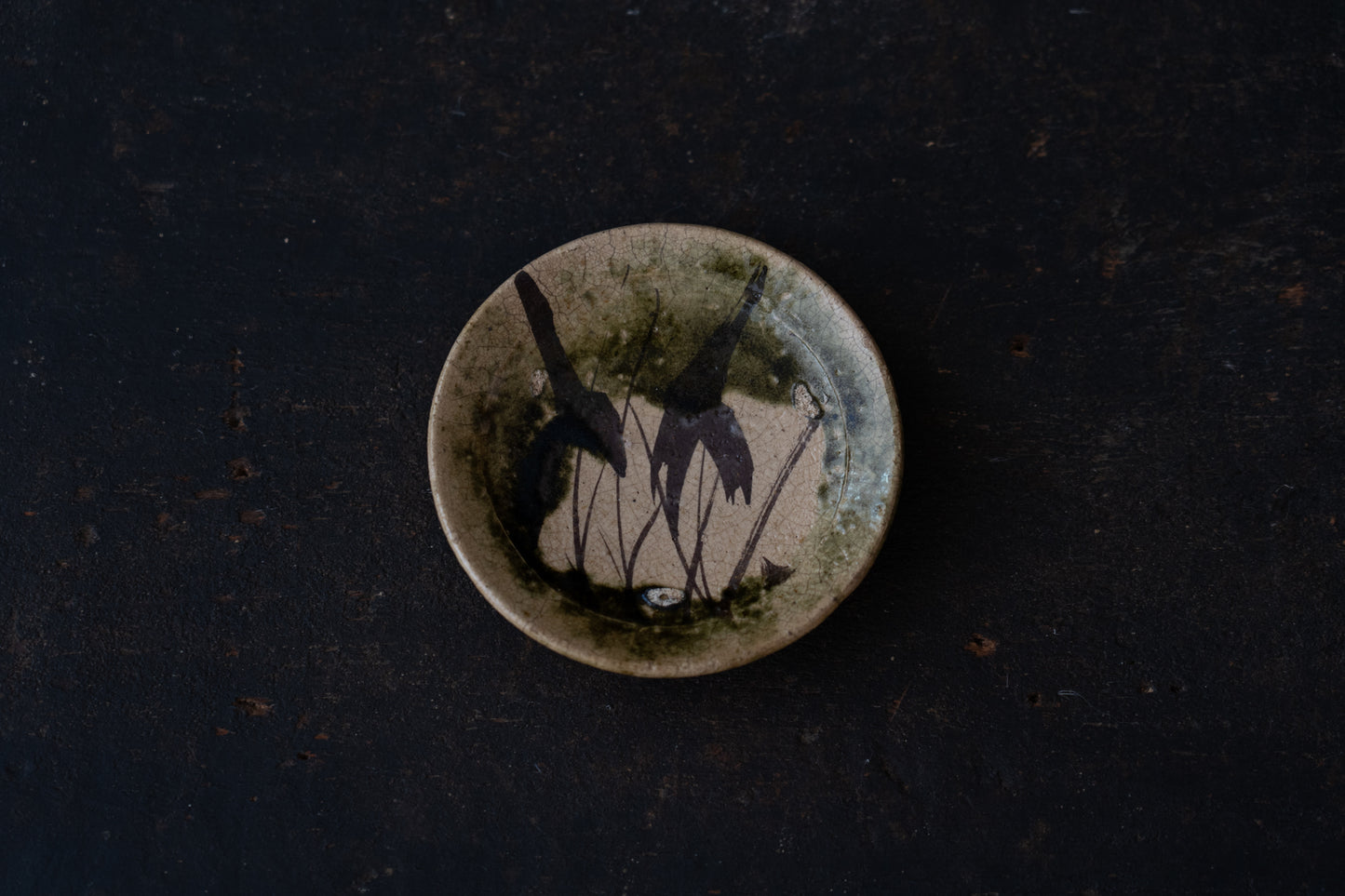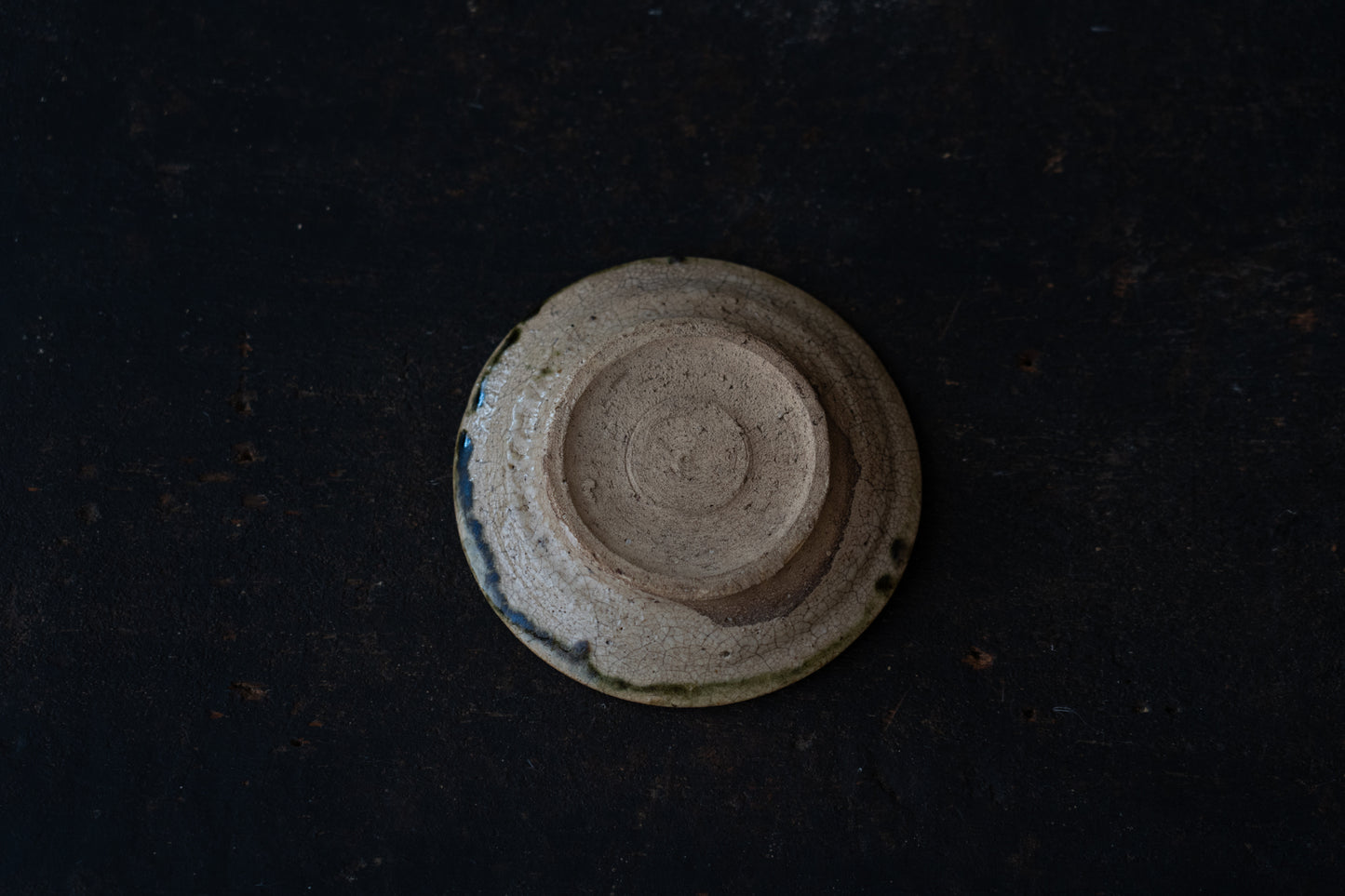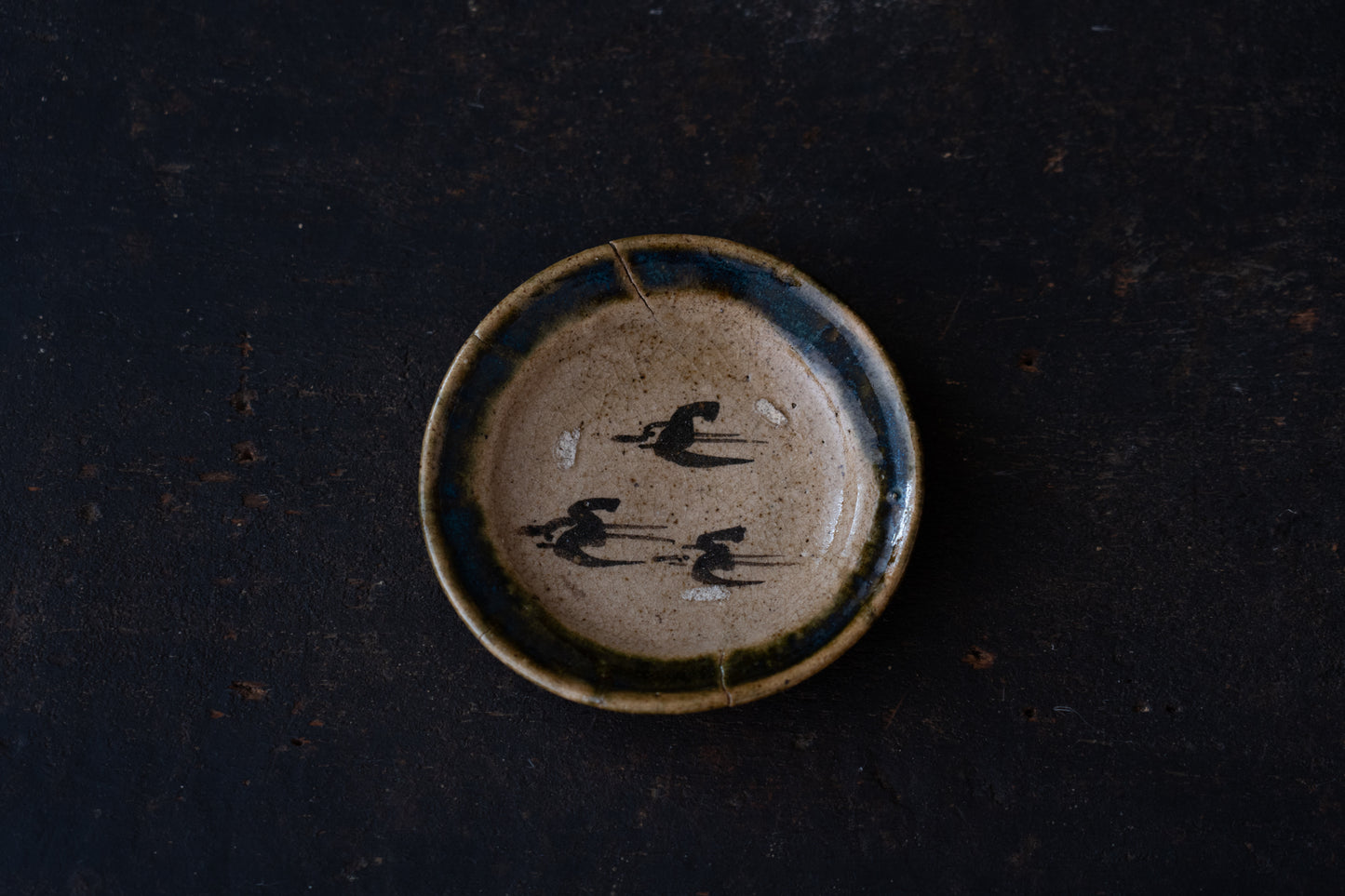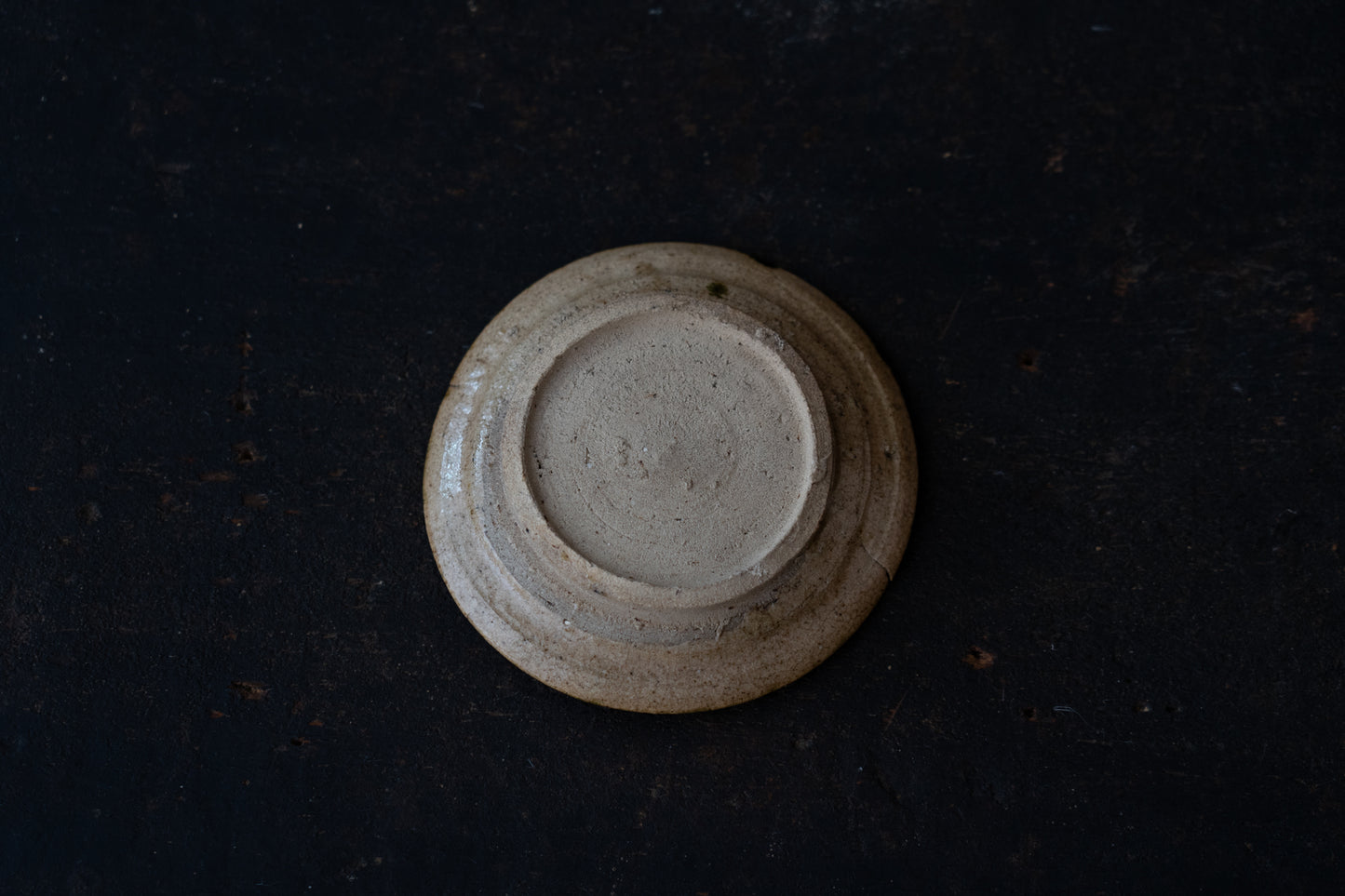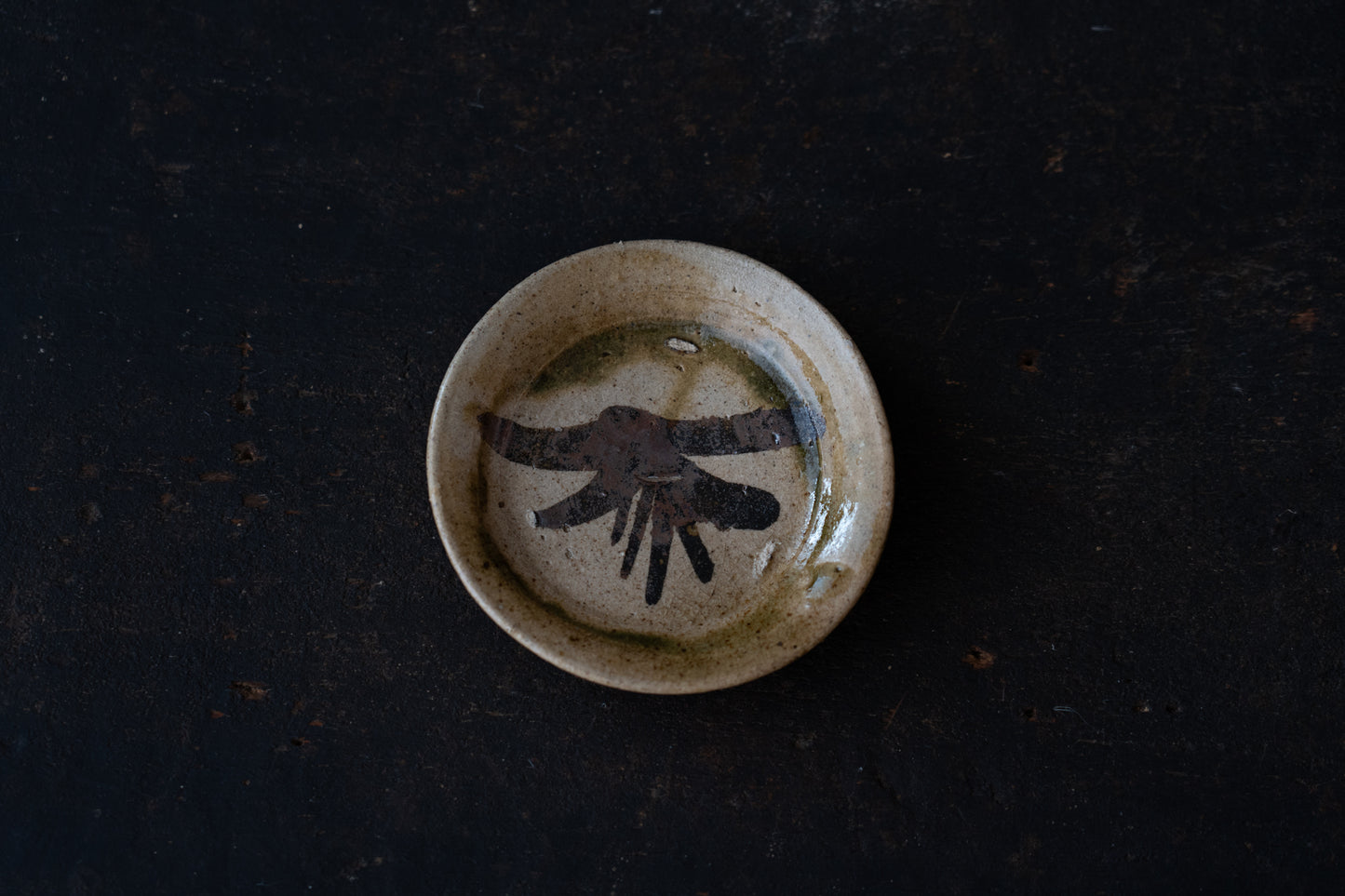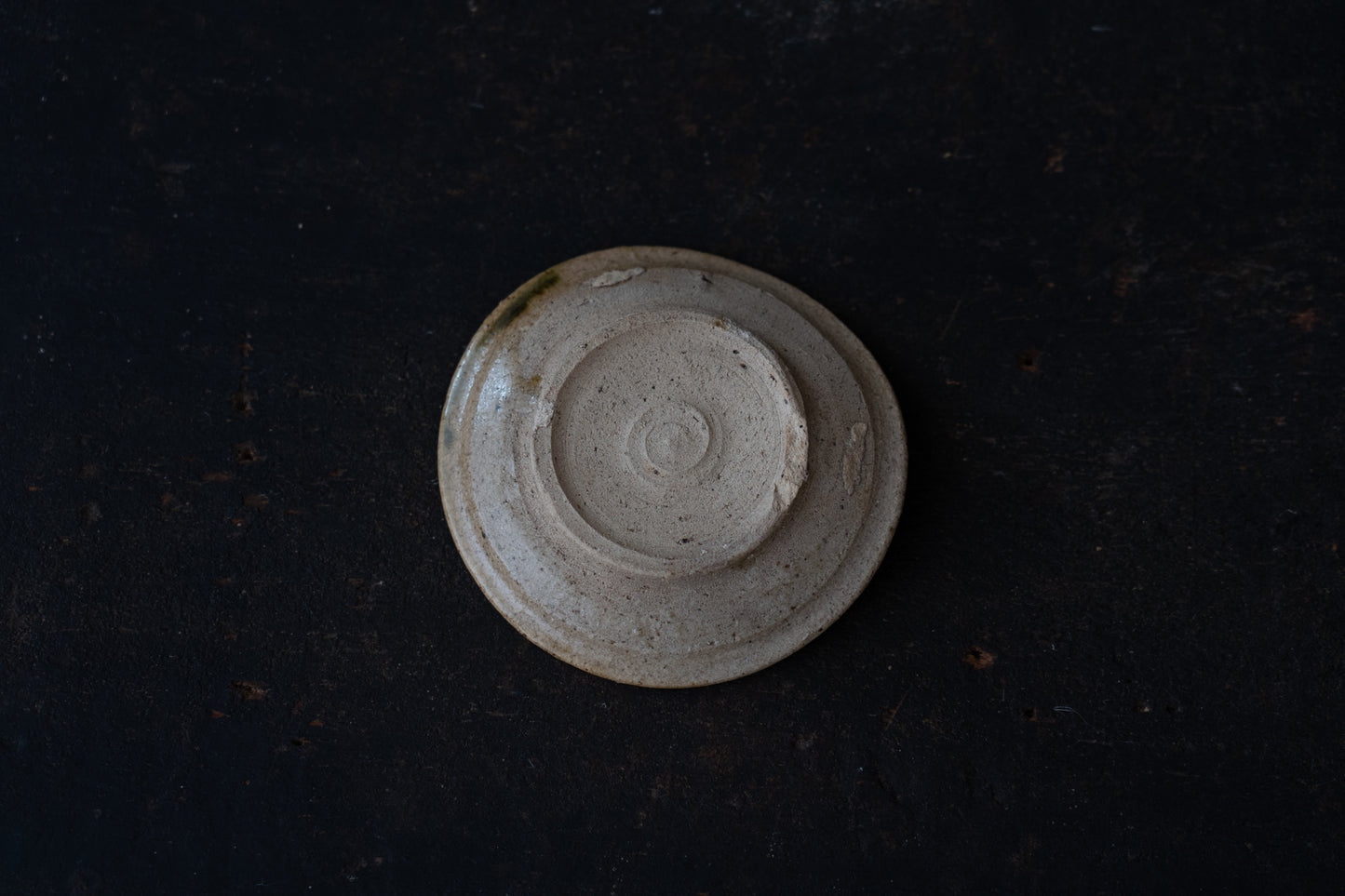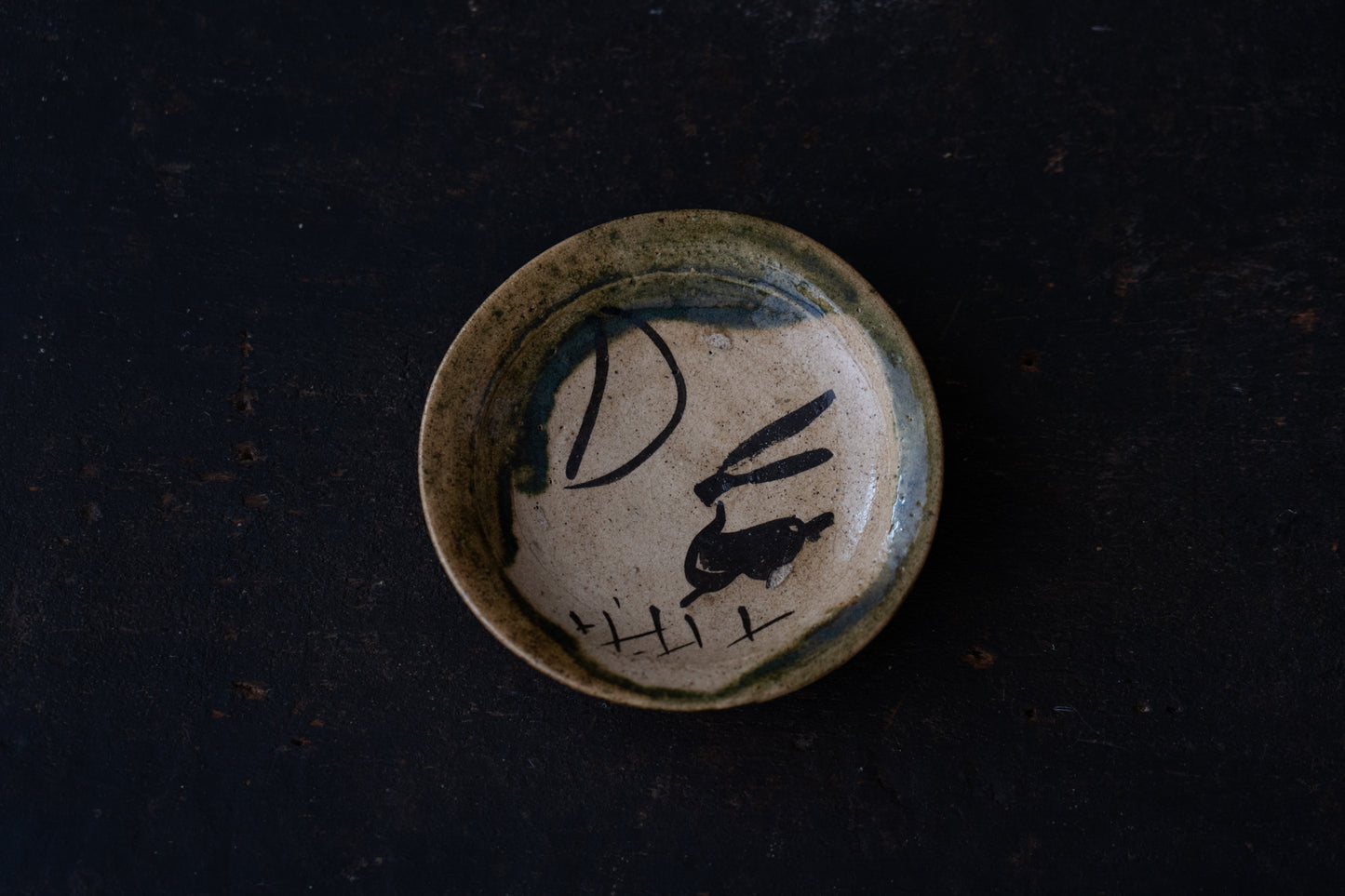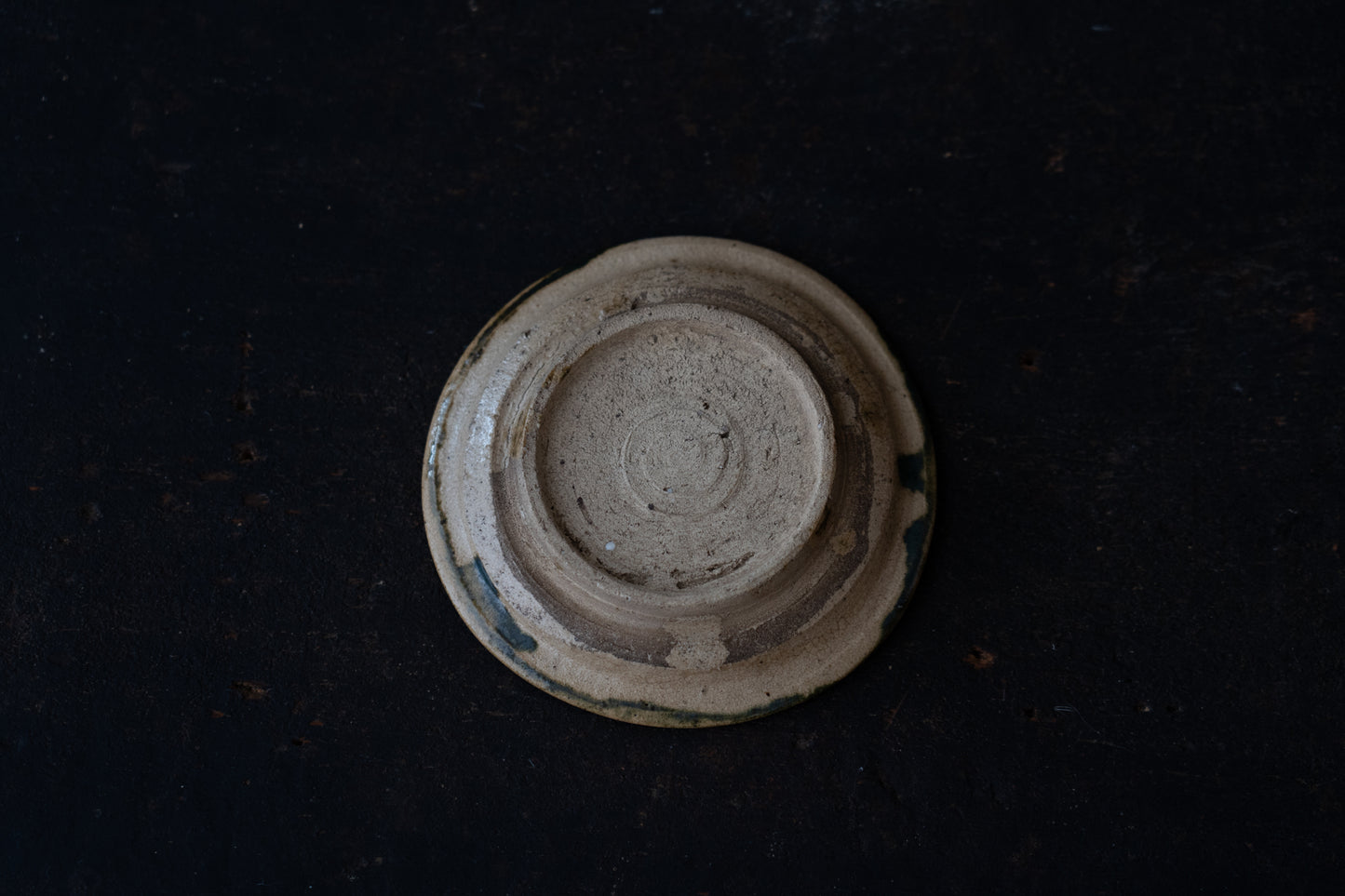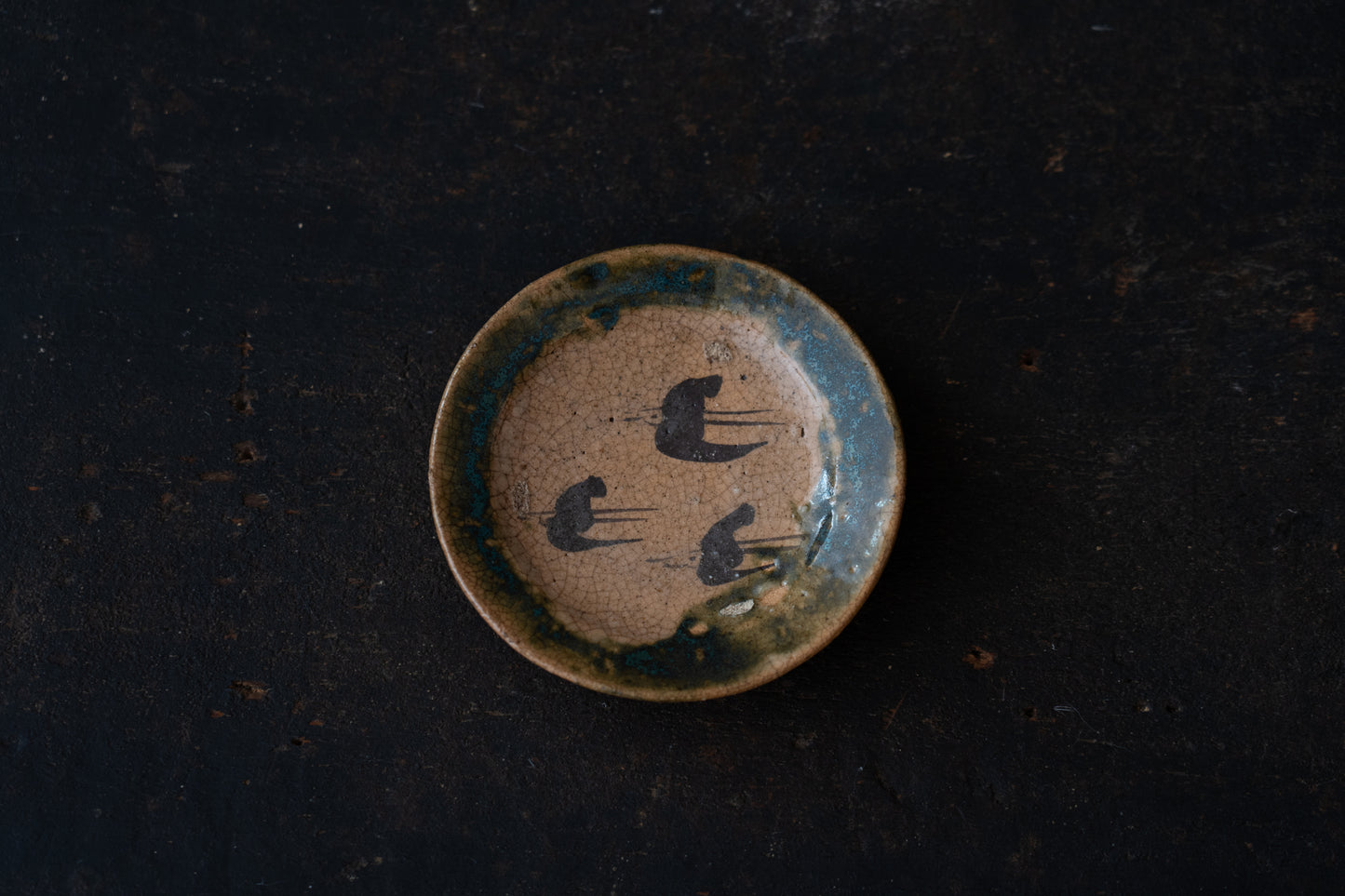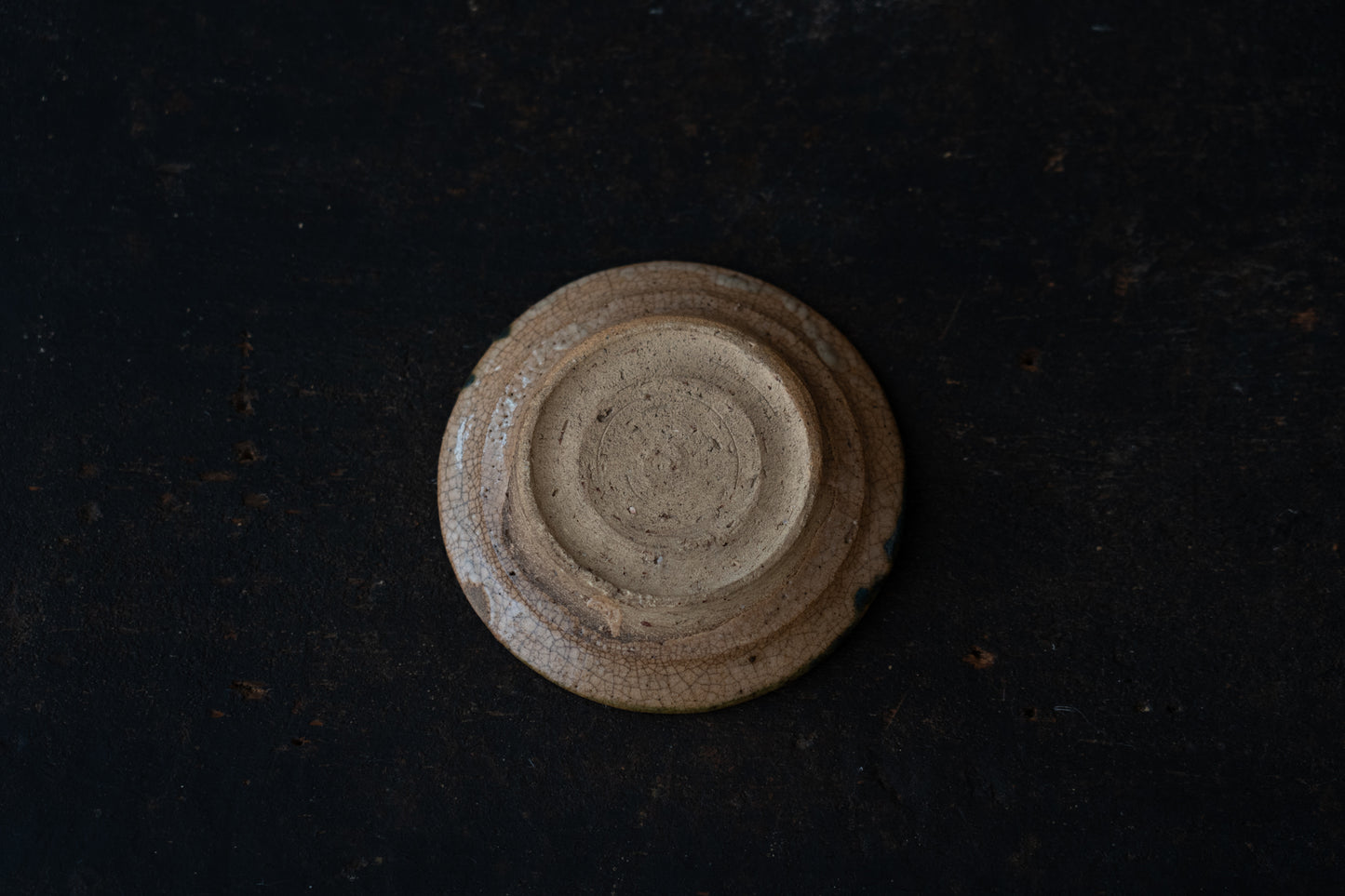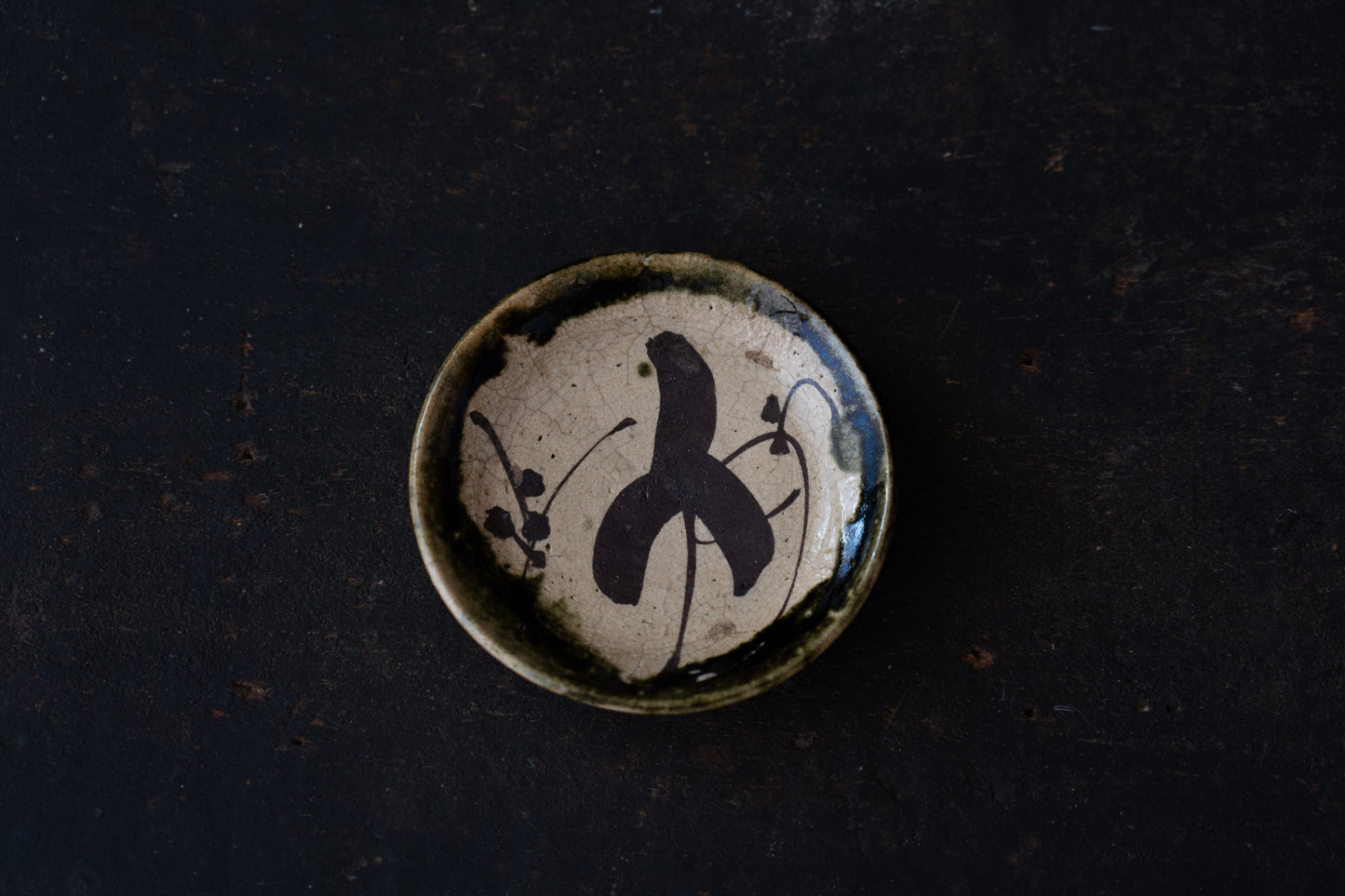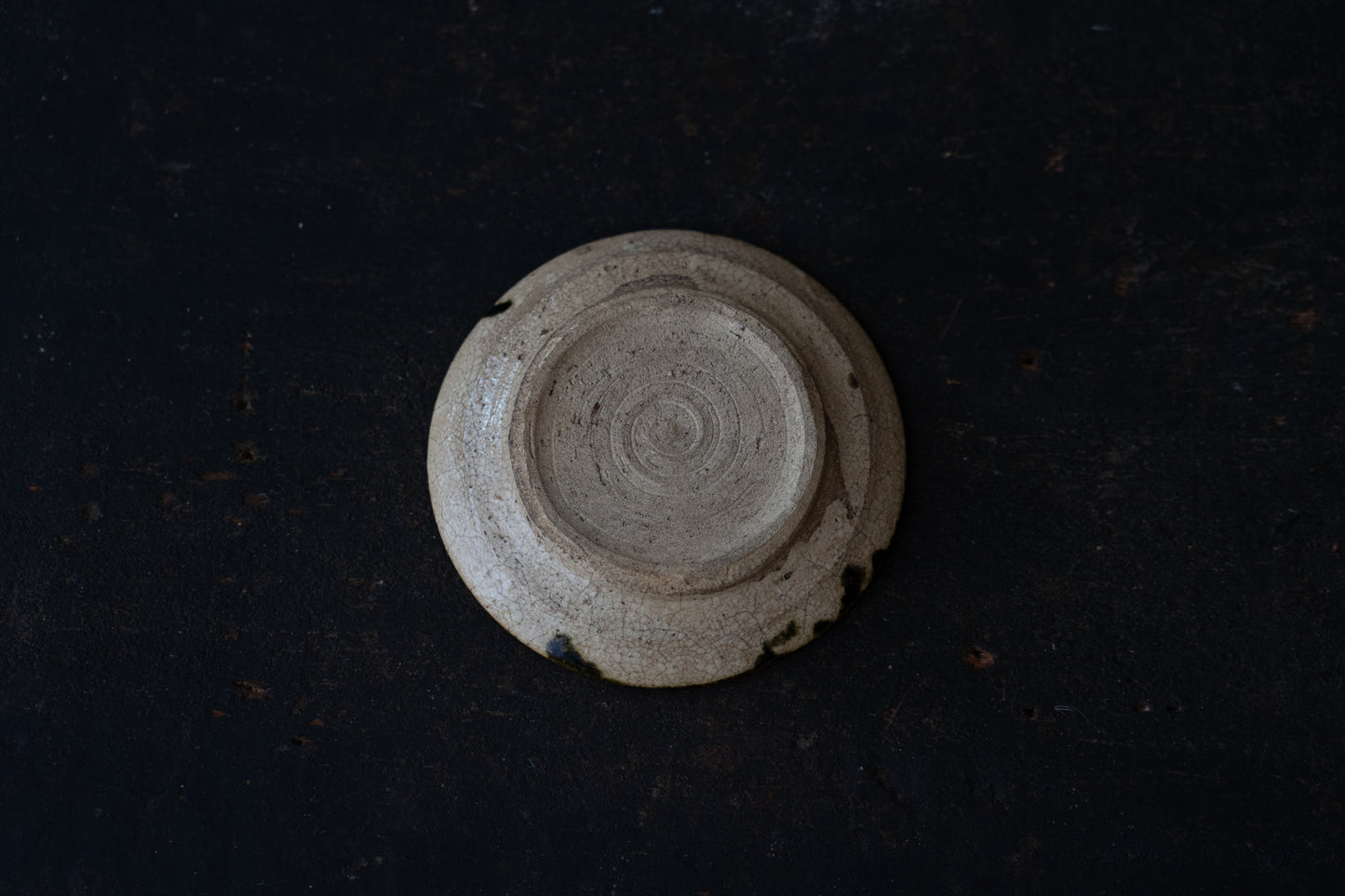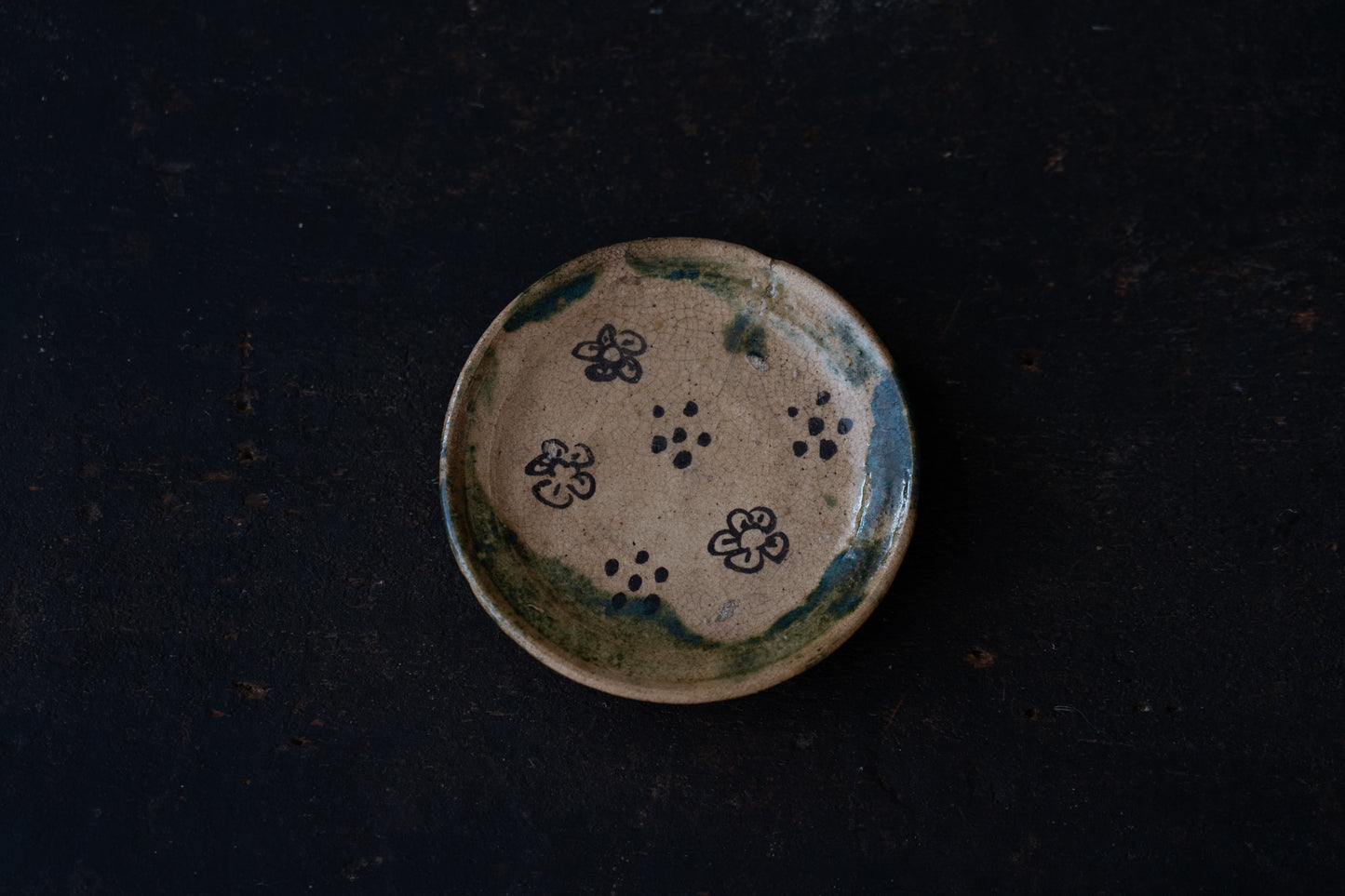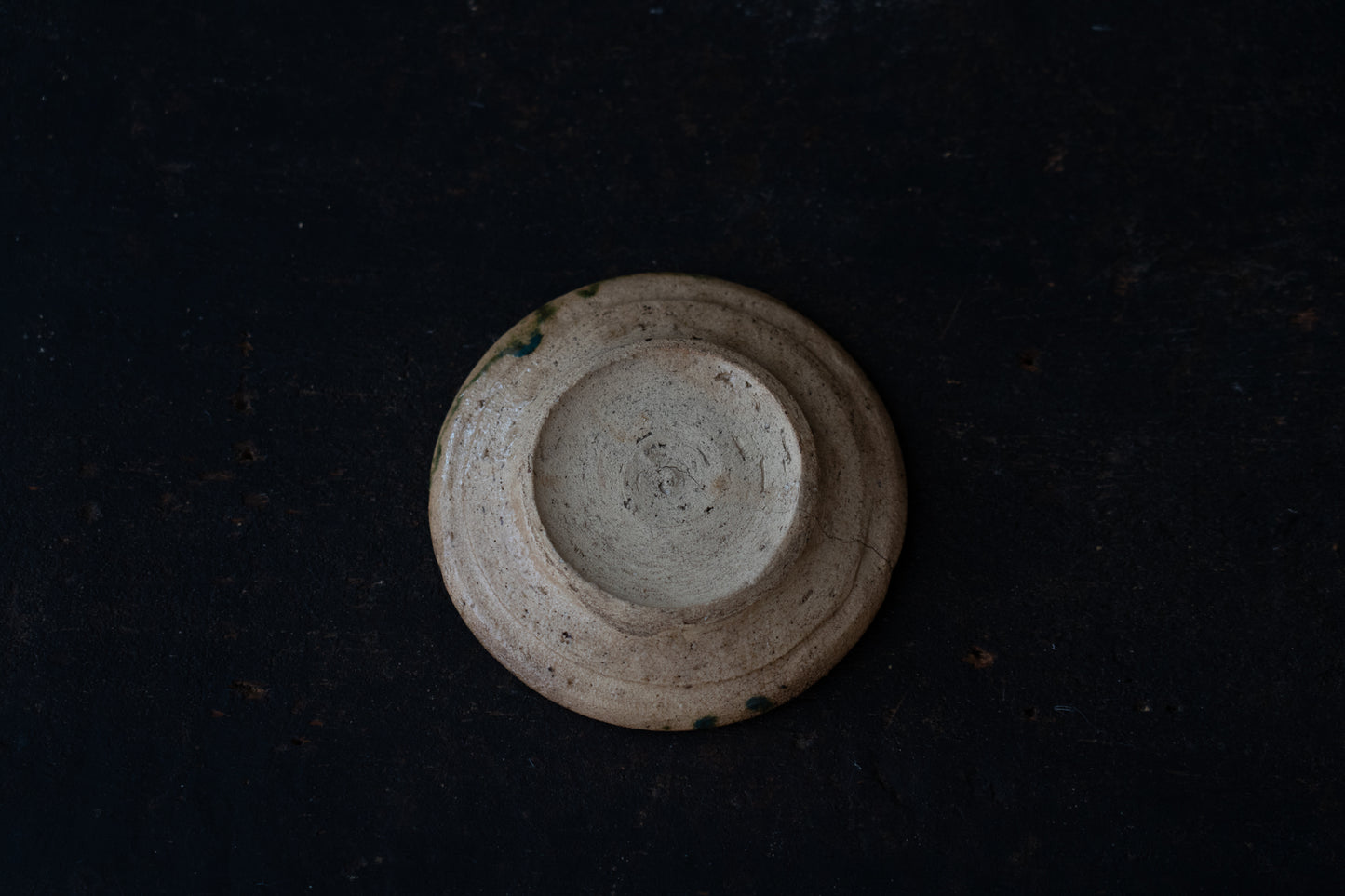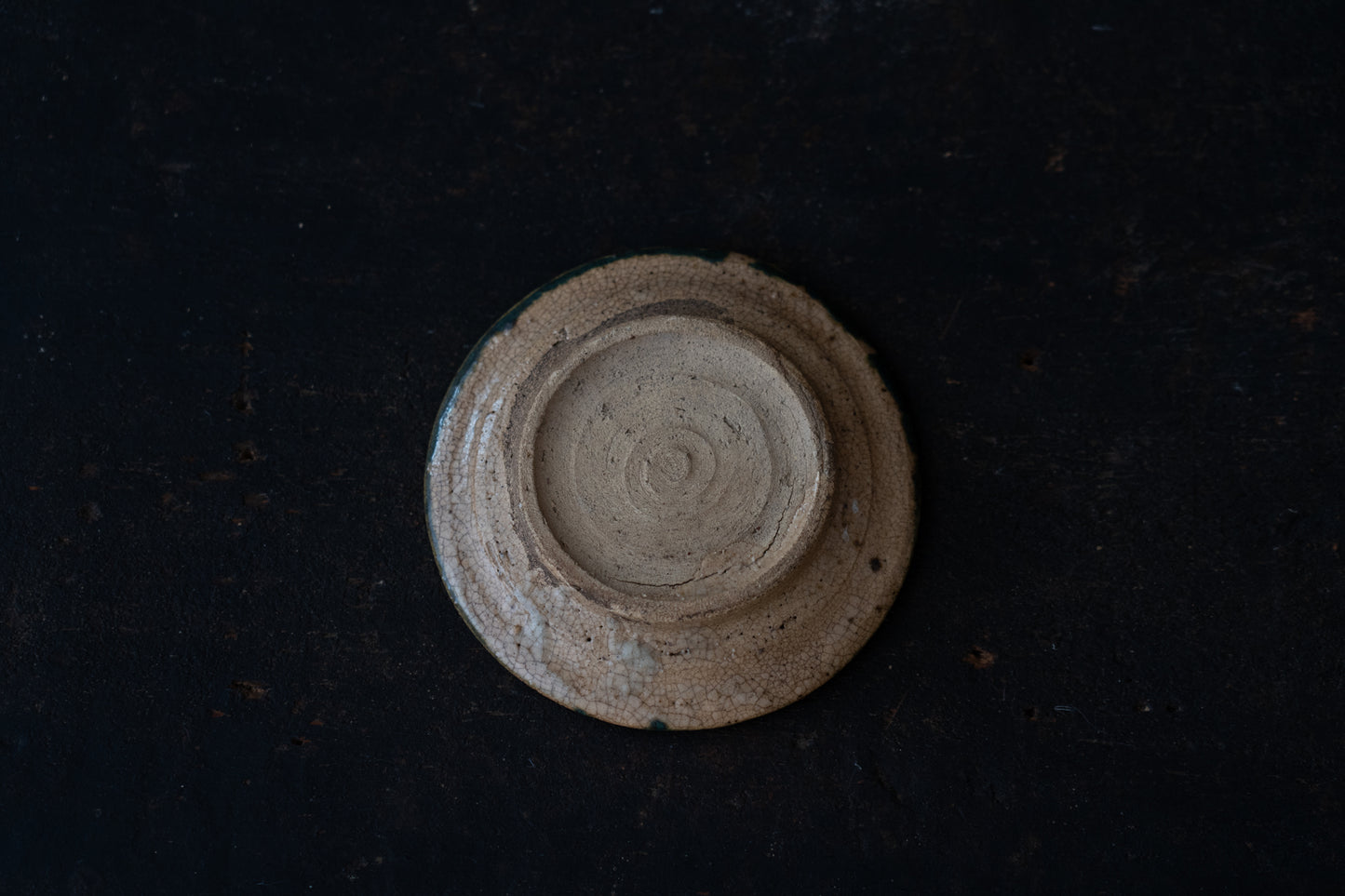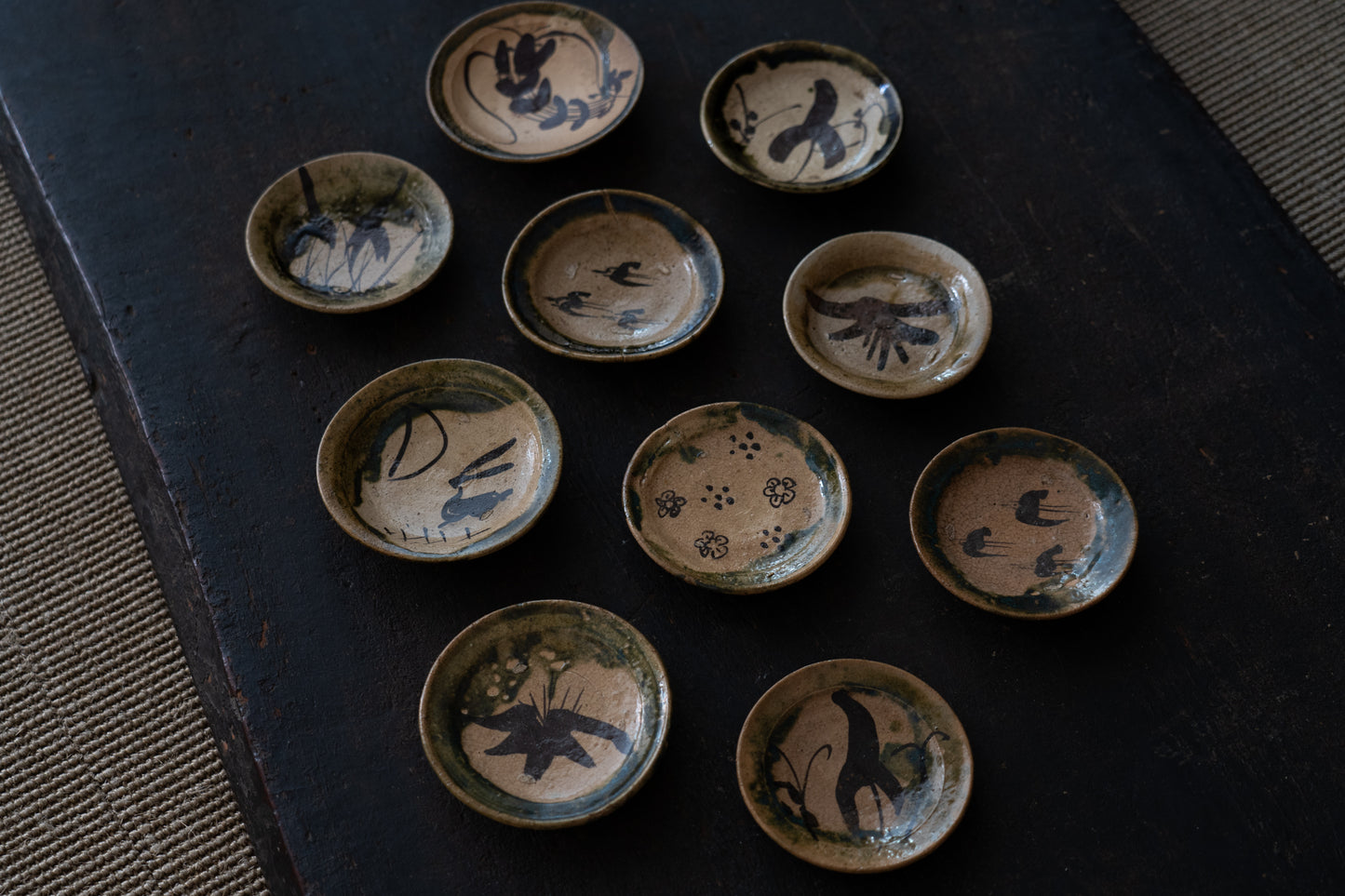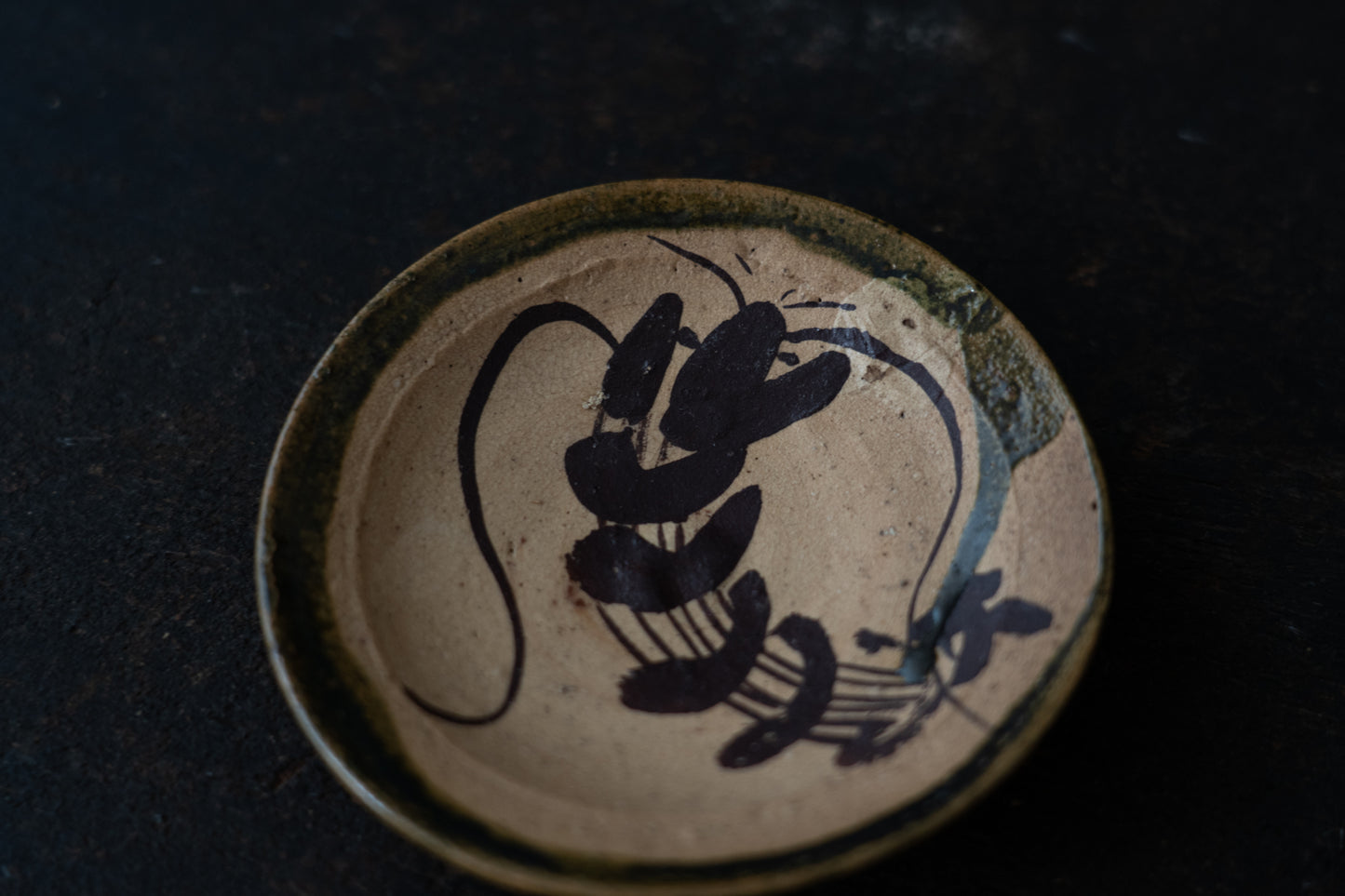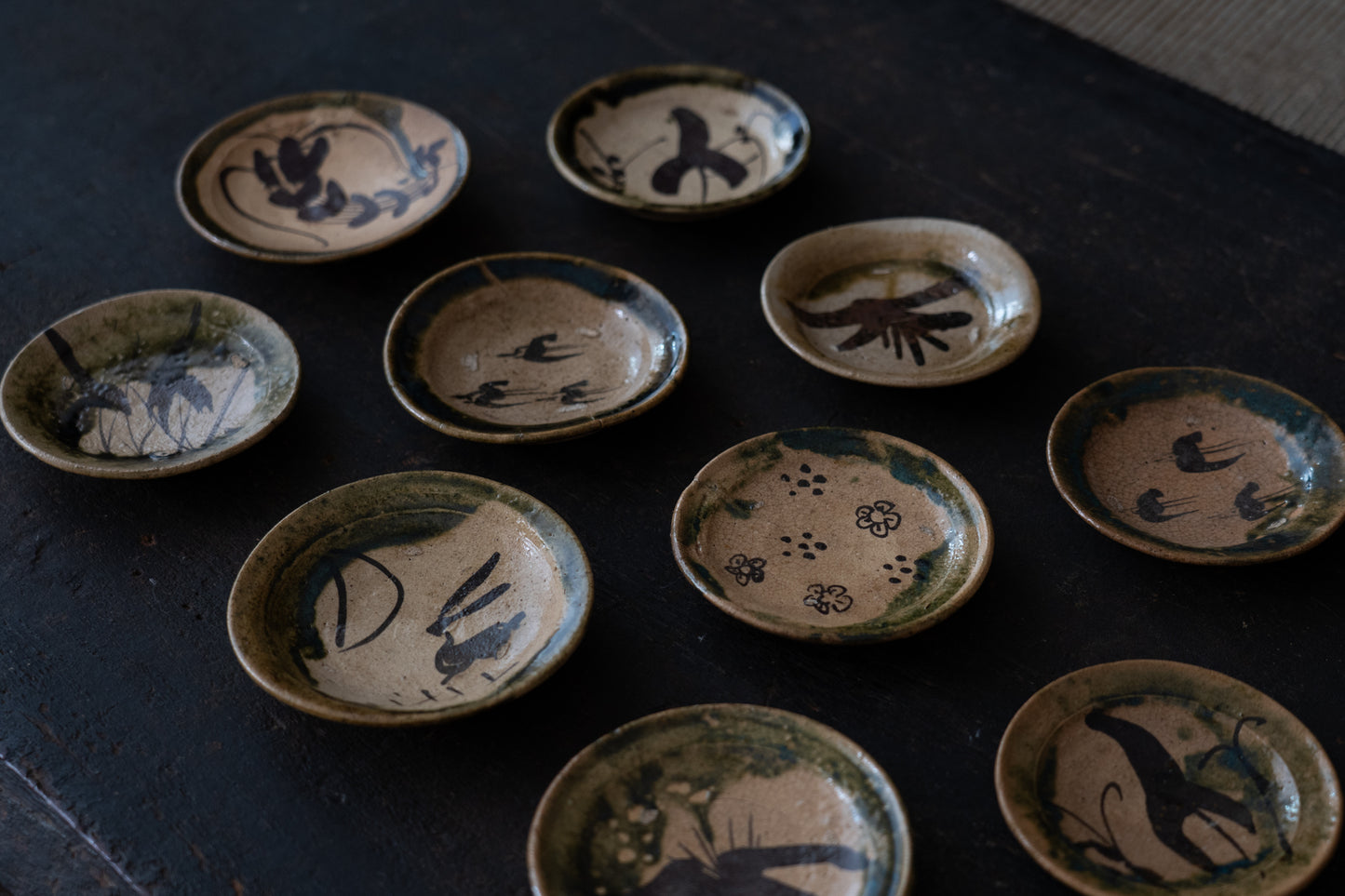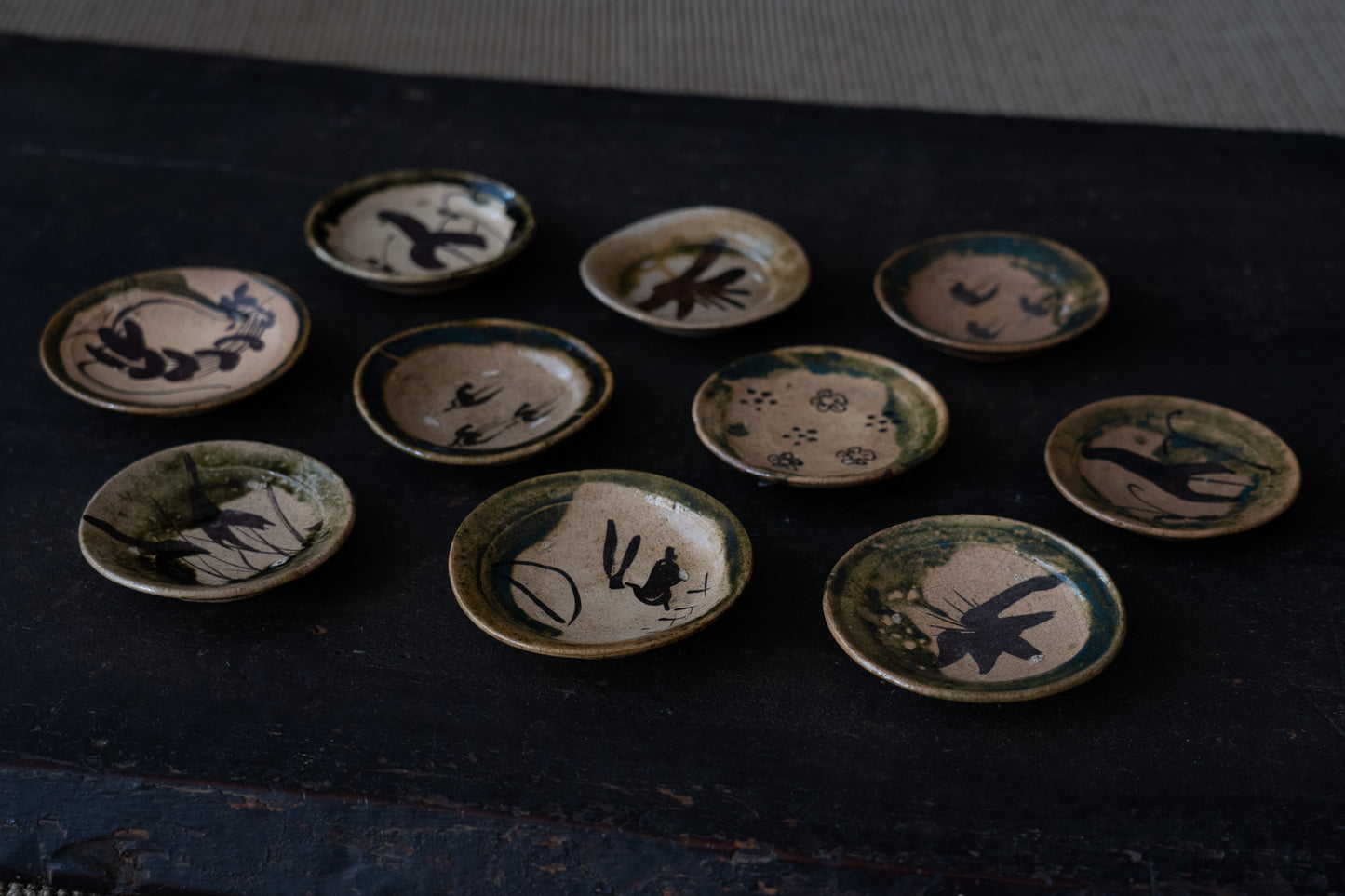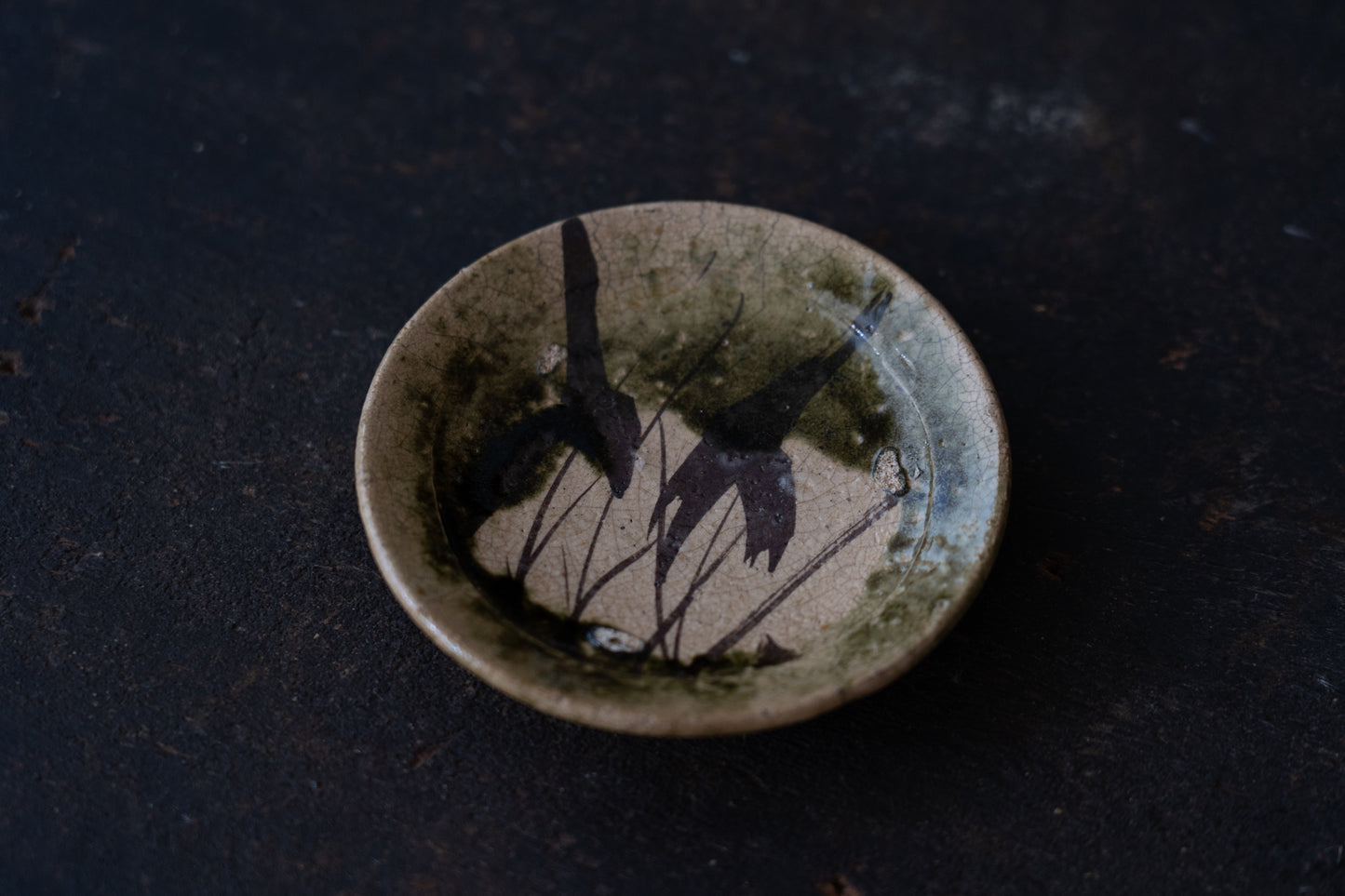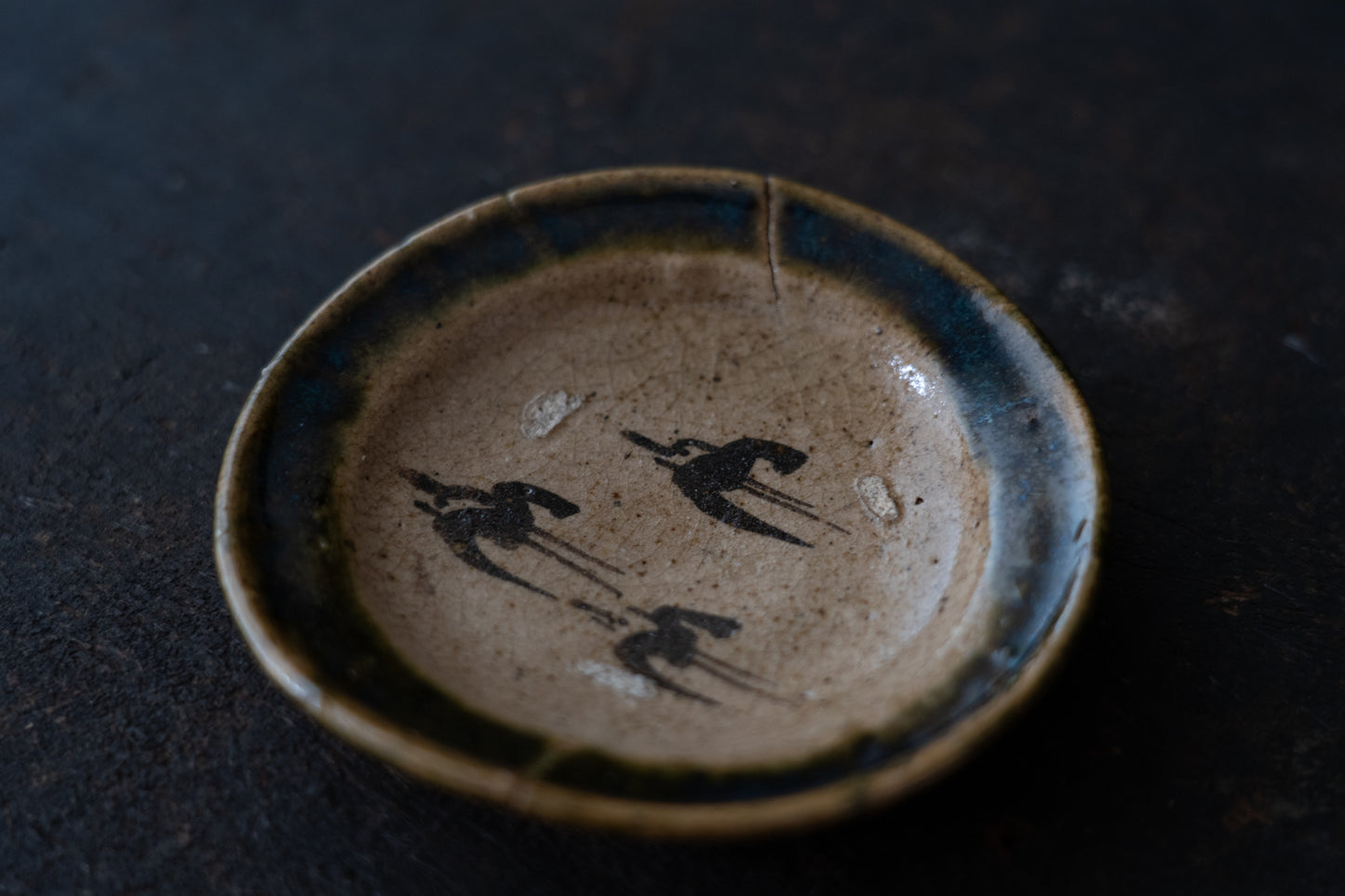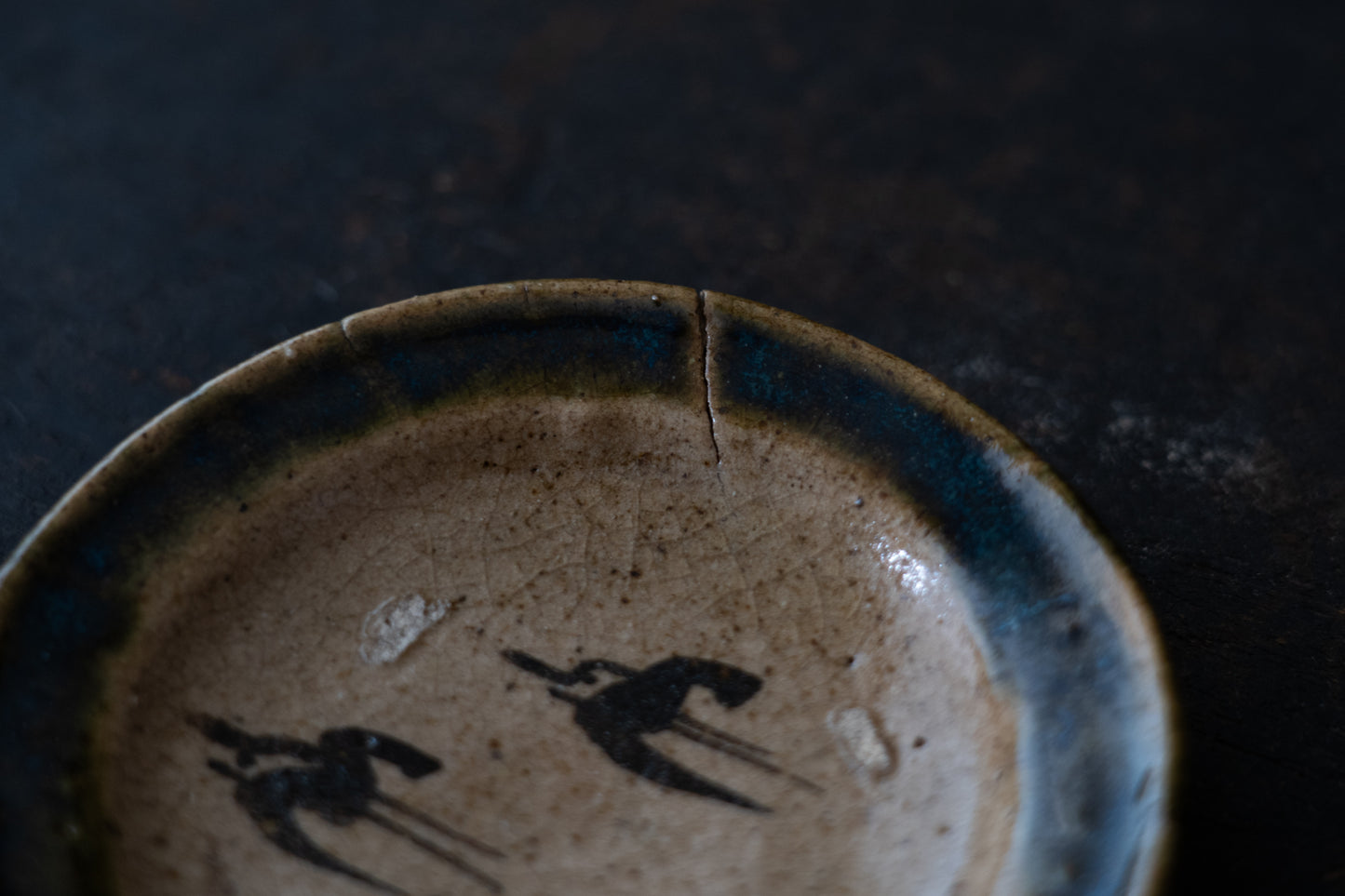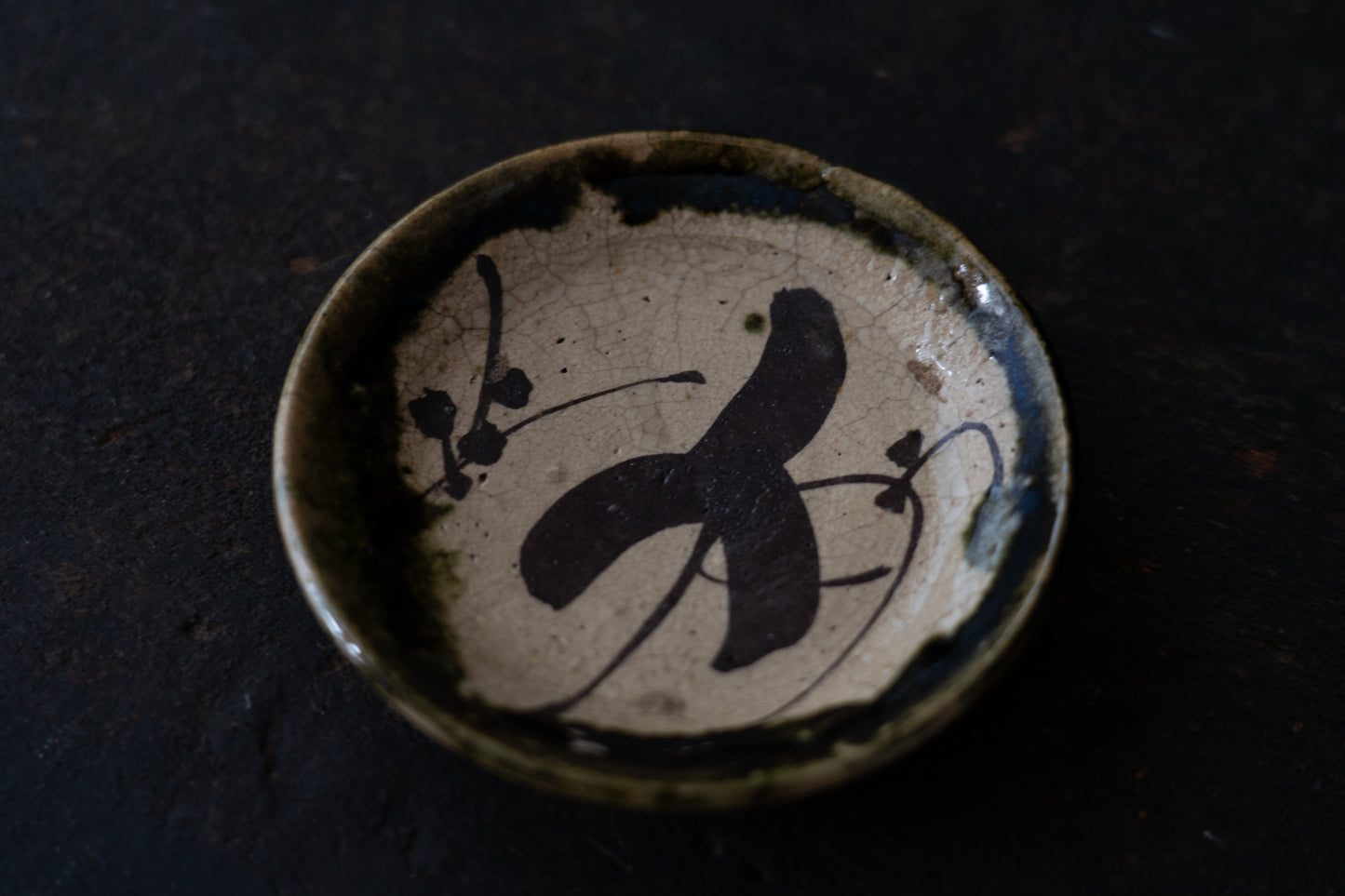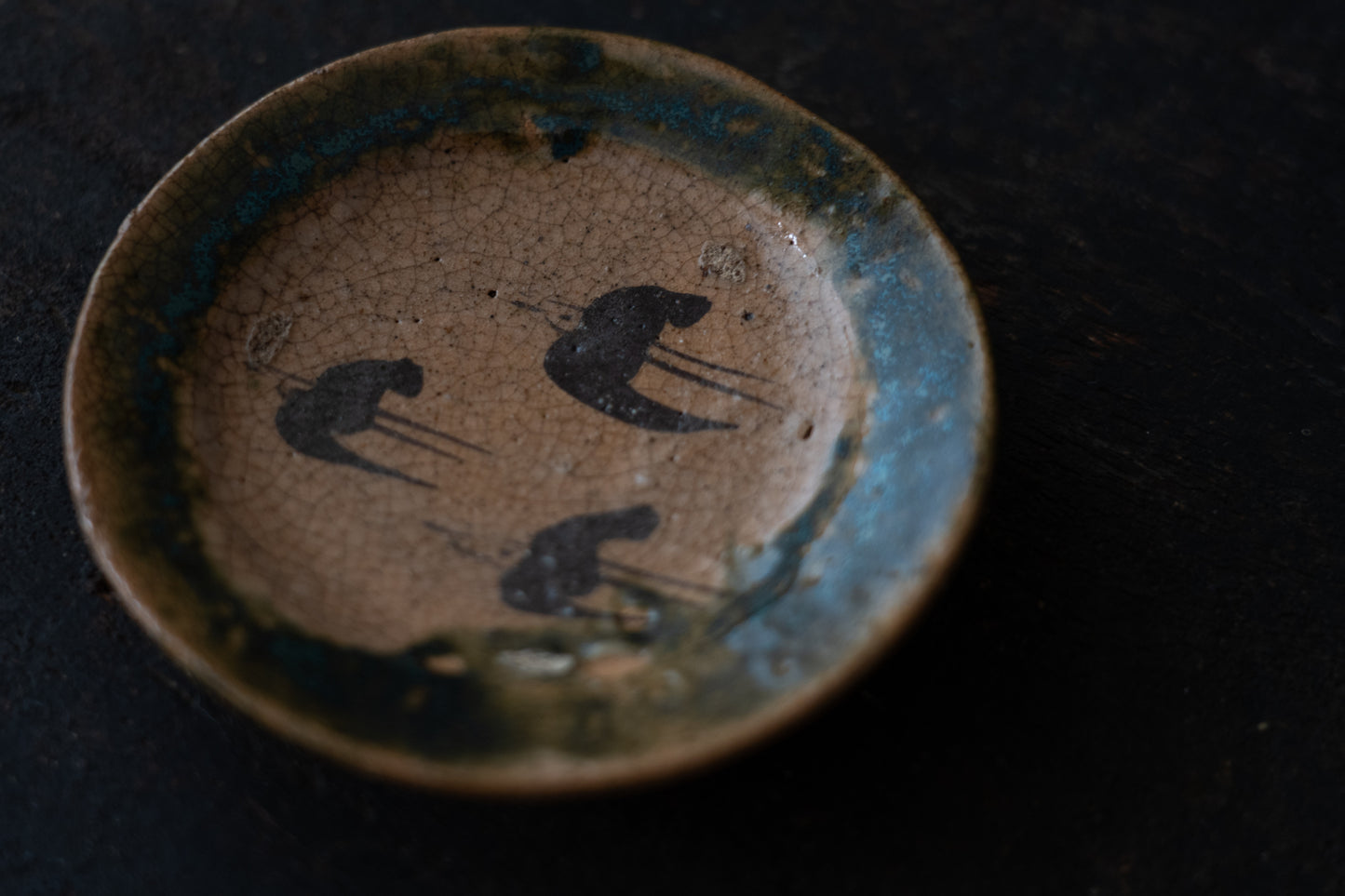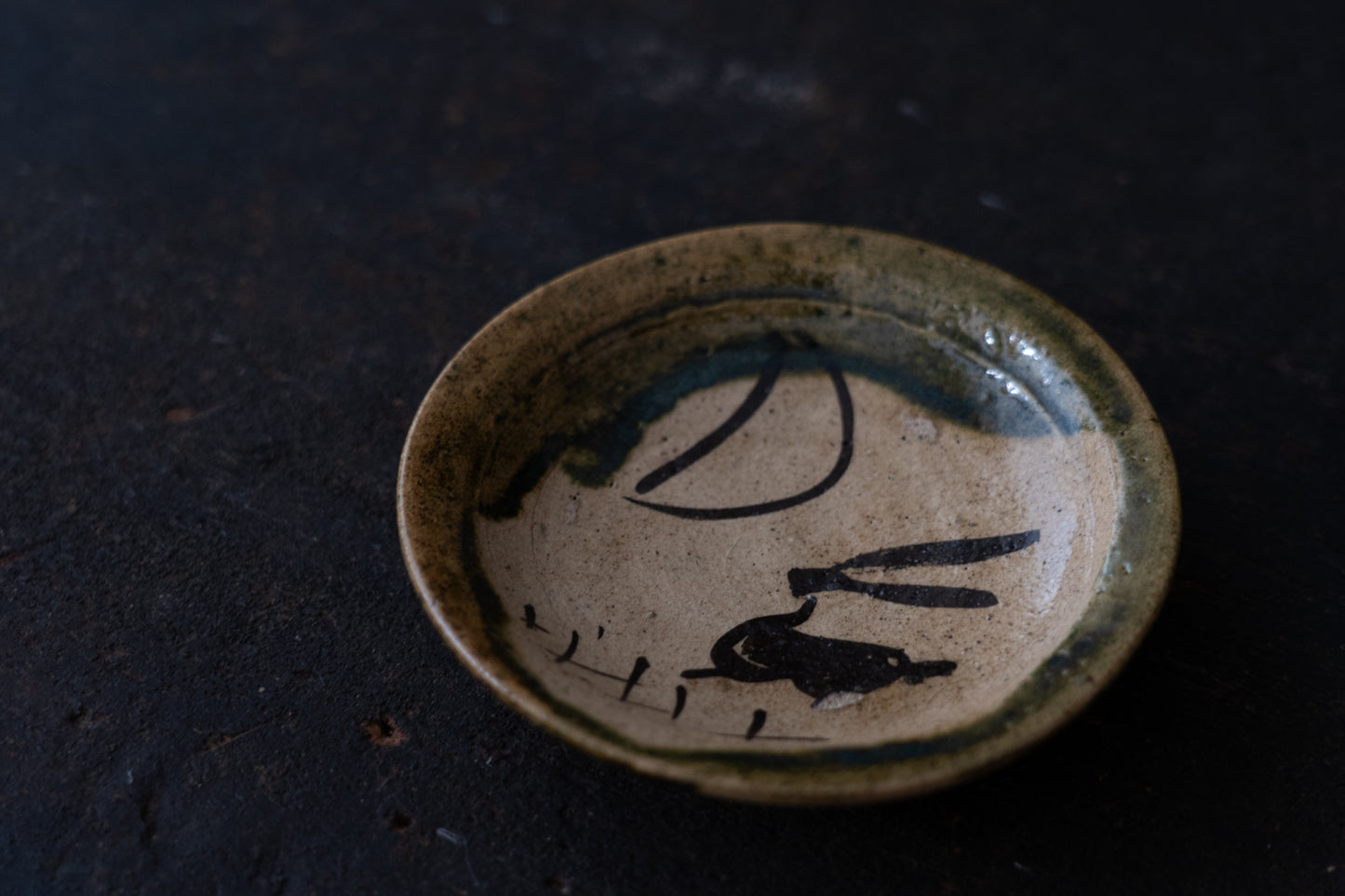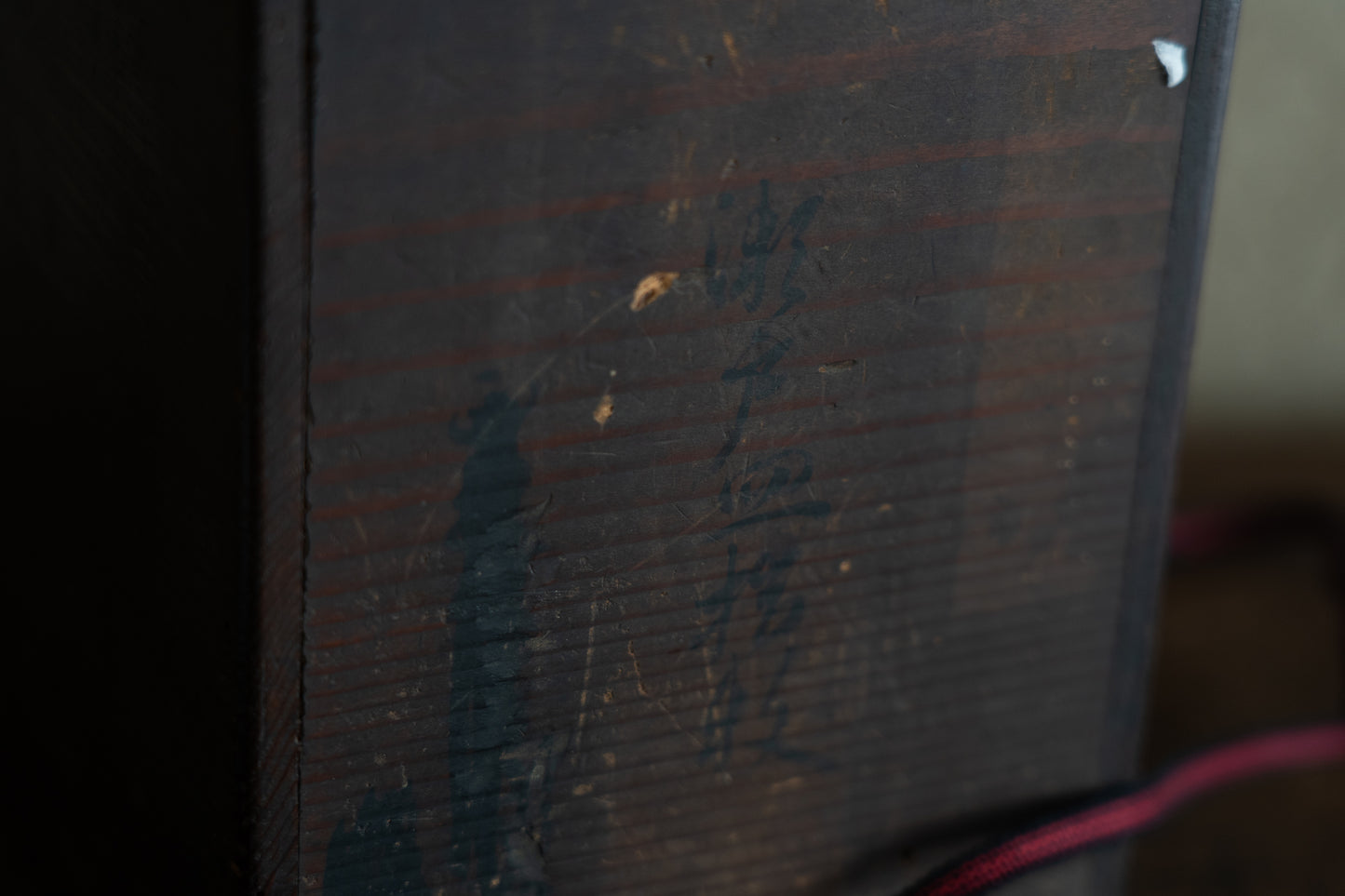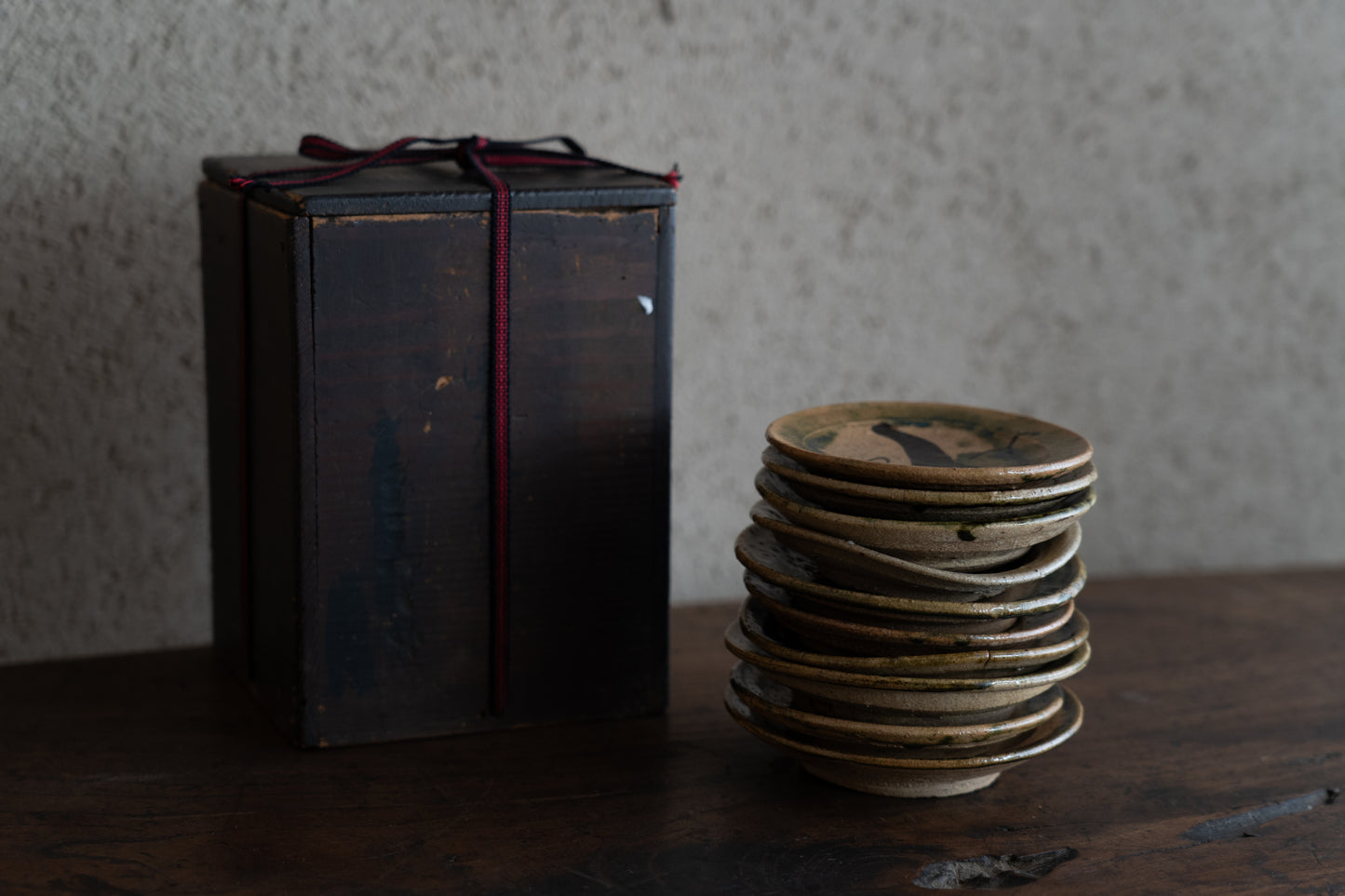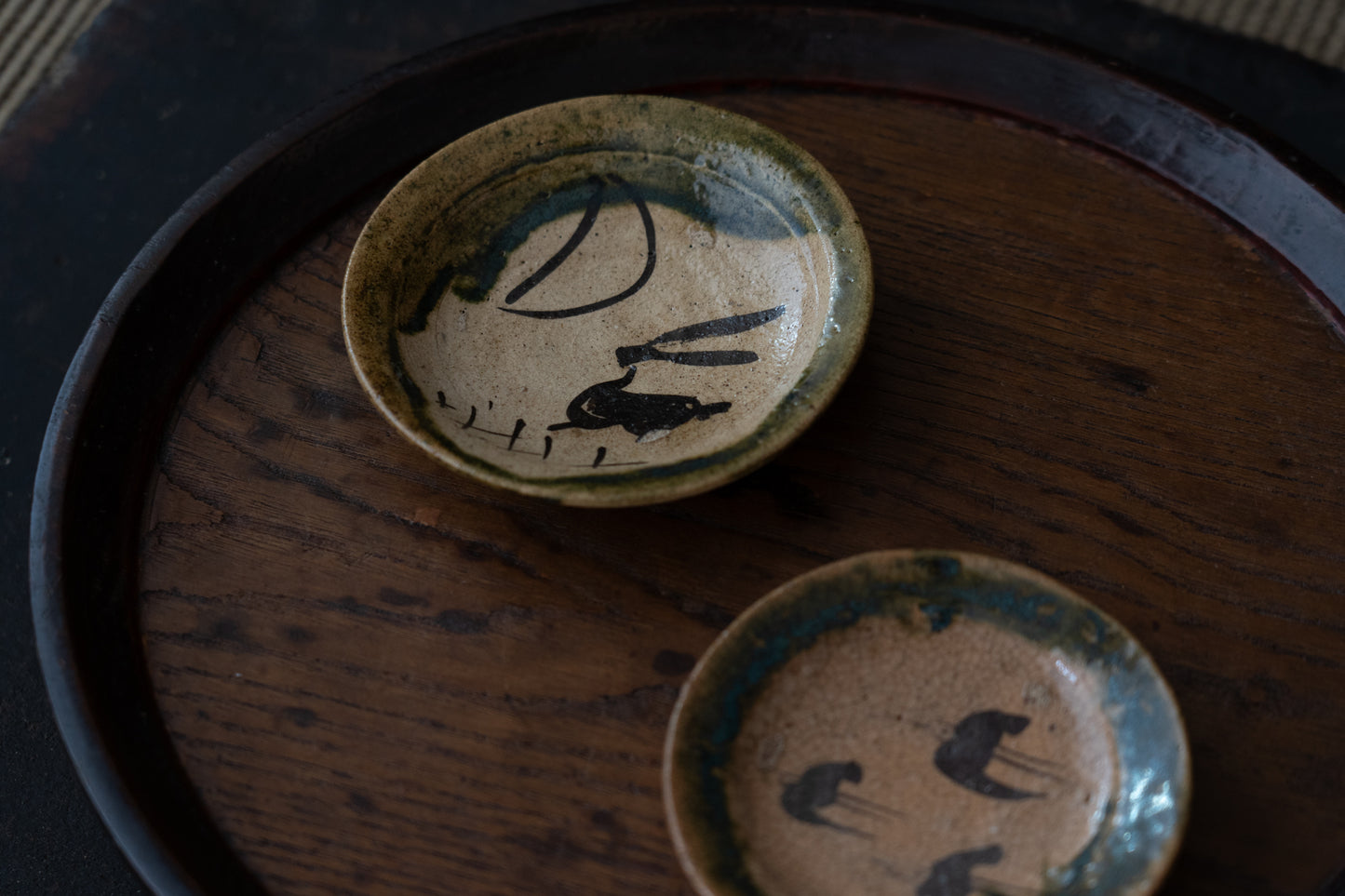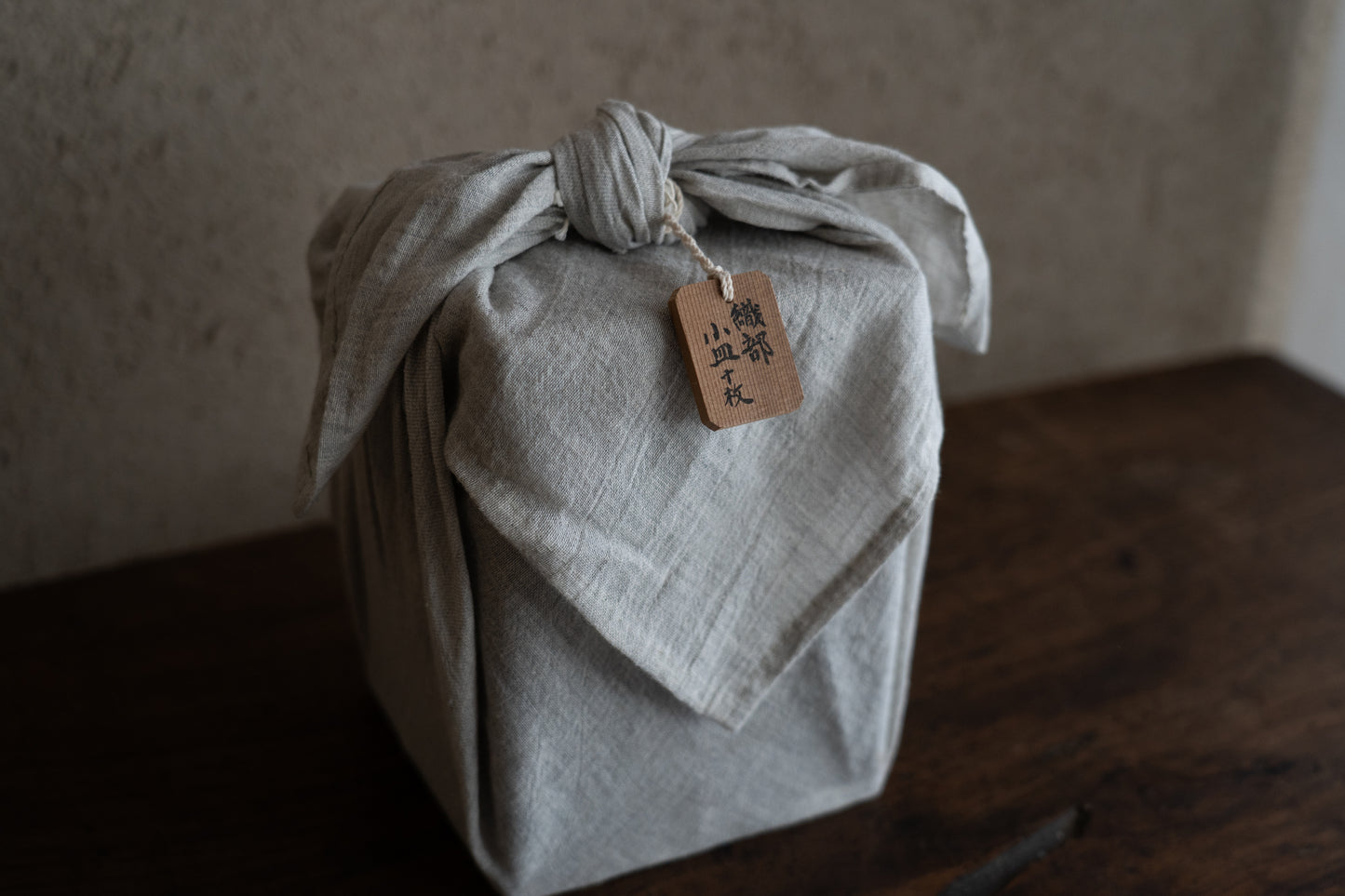A set of the Oribe plates with selected design
- Region/Era Japan, Mino / Early Edo period, 17th century
- Size H2.4 x W11.9 x D11.9cm (maximum)
- Condition There is a hairline crack about 3㎝ with a plum design plate
- Accessory paulownia box
- No. 43nk-5758
A set of small plates from Oribe. A design worth seeing.
As I will explain later, it comes with a valuable period box. I would like to give it to someone who can purchase the complete set of 10, so I am introducing it as Senka-sho first.

These three pieces are Sawabun.

In this case, the top two pieces have a bamboo pattern and the bottom two have a houndstooth pattern.

And here we have Moon Rabbit, Plum, and Shrimp. It contains one of each.
The painting on the inside of the pot is done by a quick hand and has a clear color, and the green glaze of Oribe is applied only around the edge. The clay is whitish or reddish, each with a different flavor. The shape of the plate has a shallow groove on the rim. The back side is unglazed and has a large foot.
In addition to the vibrant colors of the glazes and painting, the plates are in very good condition, and it is clear that these small plates have been carefully selected and passed down with care.

Many small plates like these have been found at the Ohira Kiln, which was the birthplace of Mino ware and was in operation from the Momoyama period until the end of the Edo period.
The Ohira Kiln was first opened in 1573. Oda Nobunaga, who was focusing on protecting pottery, made both Seto and Mino his domain and issued a permit to open a kiln in Ohira to the potter Kato Goroemon Kagetoyo.
Blessed with good quality soil, Ohira kilns produced a large amount of highly artistic Mino pottery, starting with Kiseto and Setoguro, as well as Oribe and Shino. In the 1630s, tea ware disappeared, but chrysanthemum plates and sake bottles began to be produced.

Judging from similar items, this small plate is thought to have been made in the first half of the 17th century. Its shape differs from that of tea ware, but its craftsmanship still allows one to fully sense the essence of Momoyama Oribe ware, which was at the height of its popularity.
Above all, it is miraculous that such a set of well-made and well-designed small plates has been passed down from among those that were likely mass-produced.

It comes with an old paulownia box, with the words "Seto plates, set of 10" written in ink. During the Momoyama and Edo periods, Oribe ware was called "Seto". It was only after a long time that the names "Oribe" and "Mino" came into use. The box with "Seto" written on it can be considered to be an indication that it is an heirloom from a time before the names Oribe and Mino were used.

To pick up and see the actual item in the gallery.
Reservation